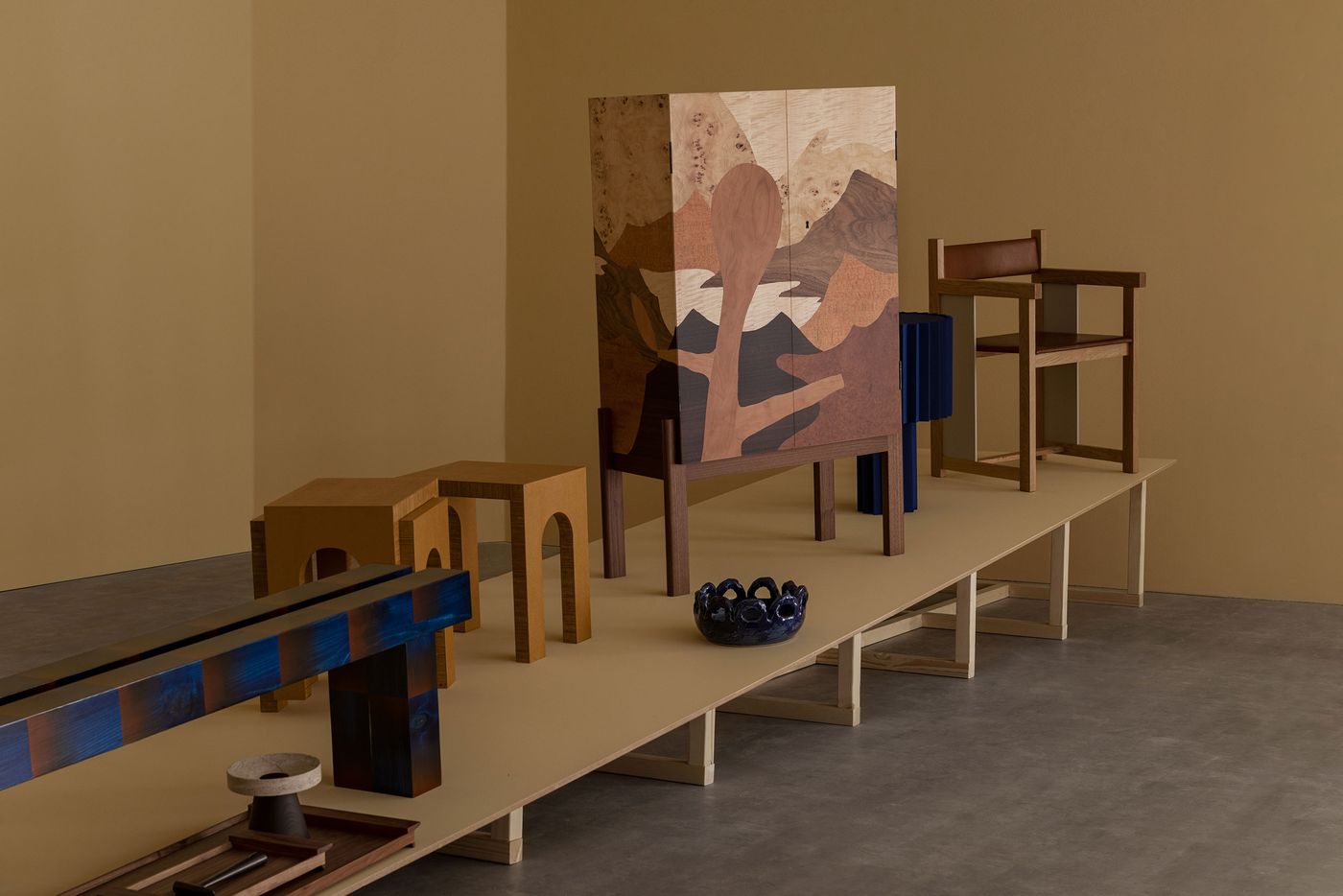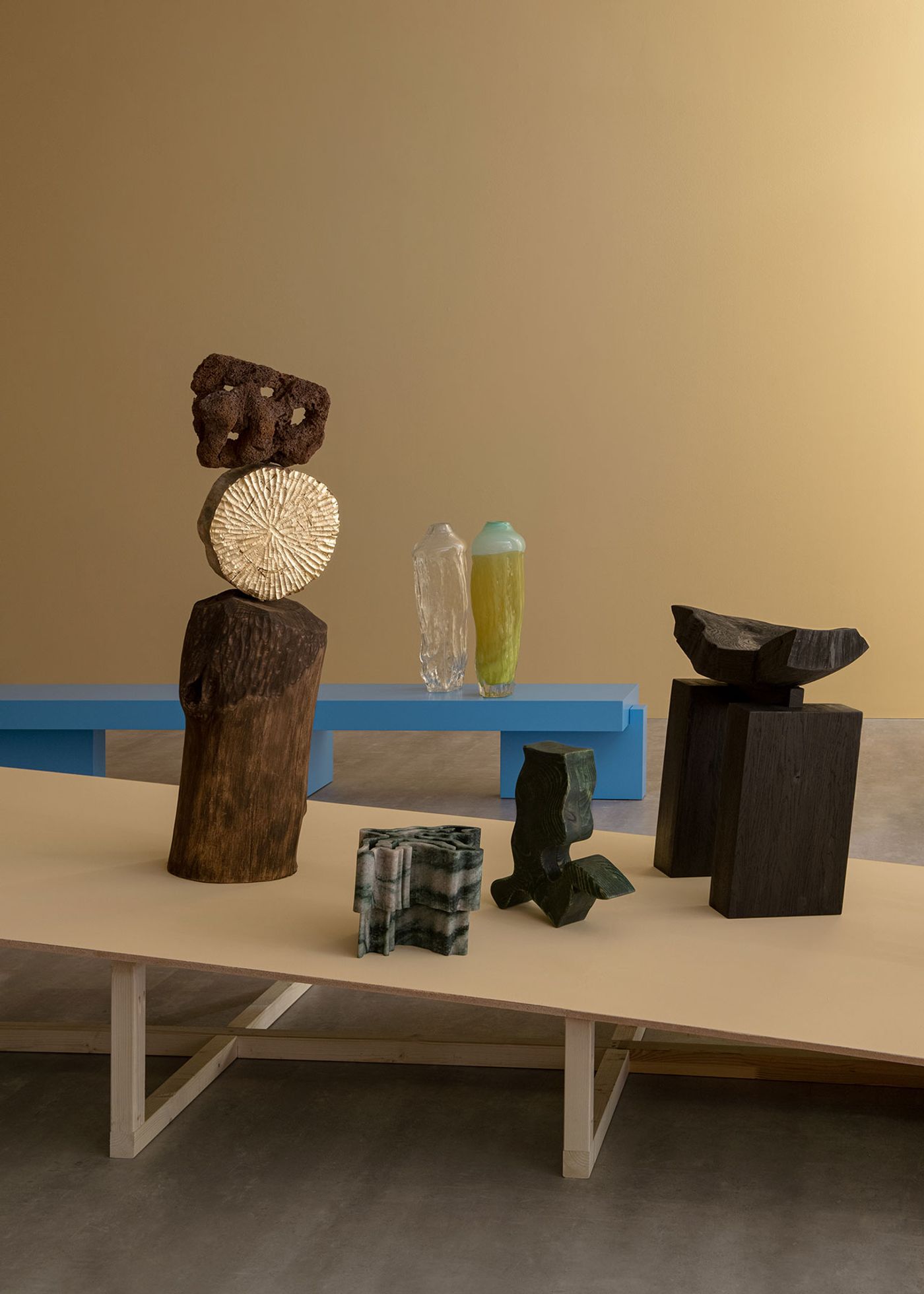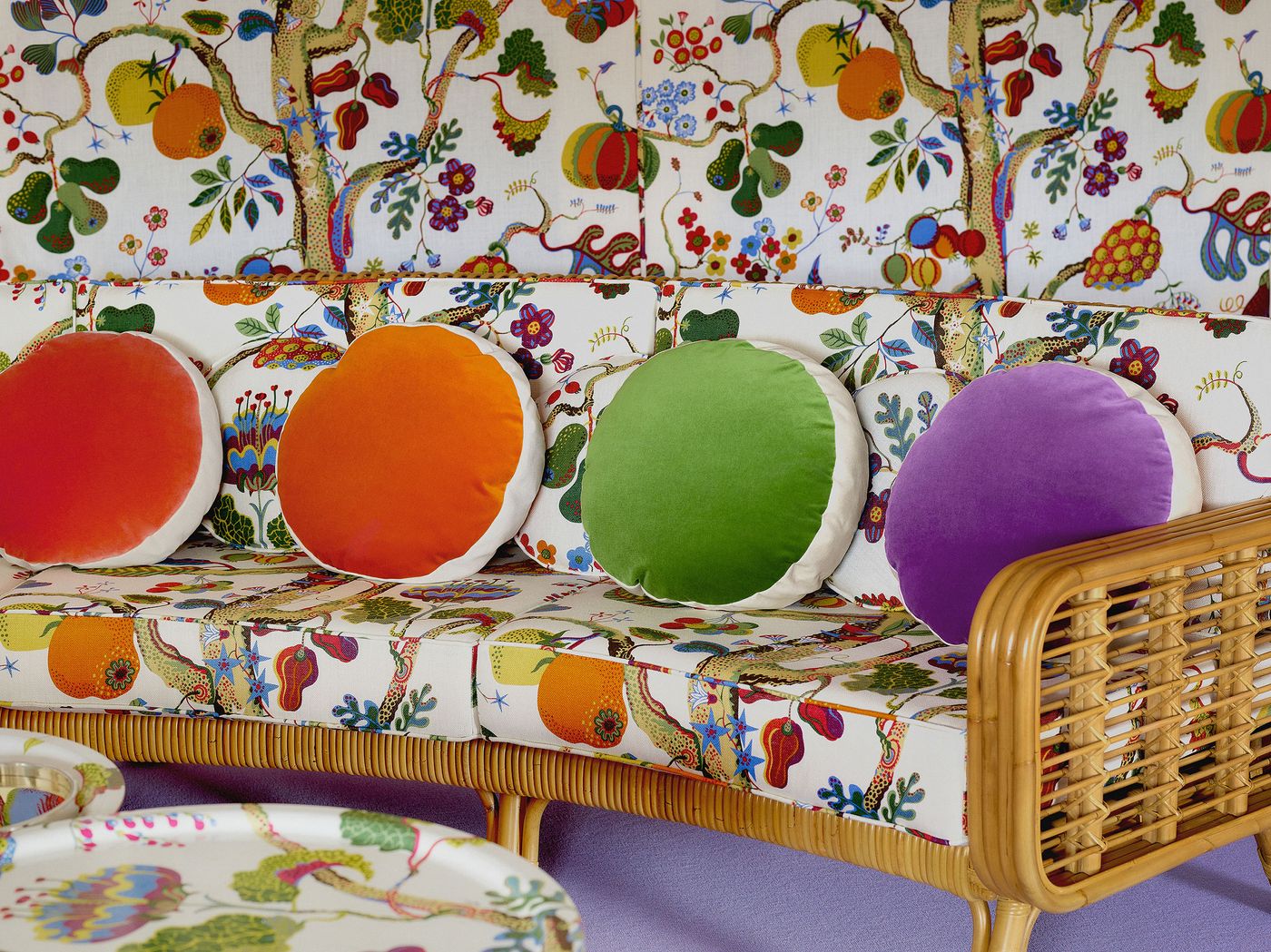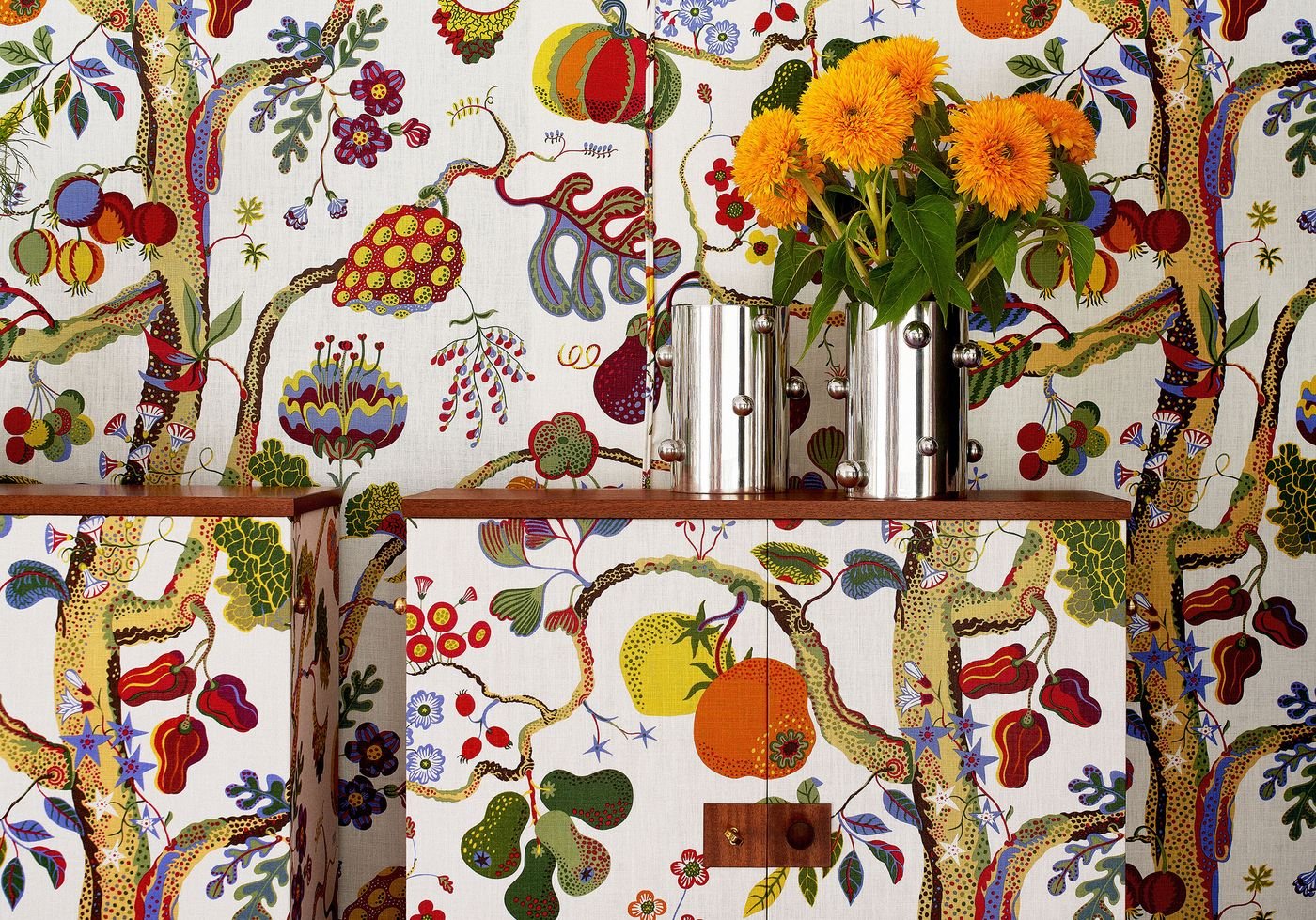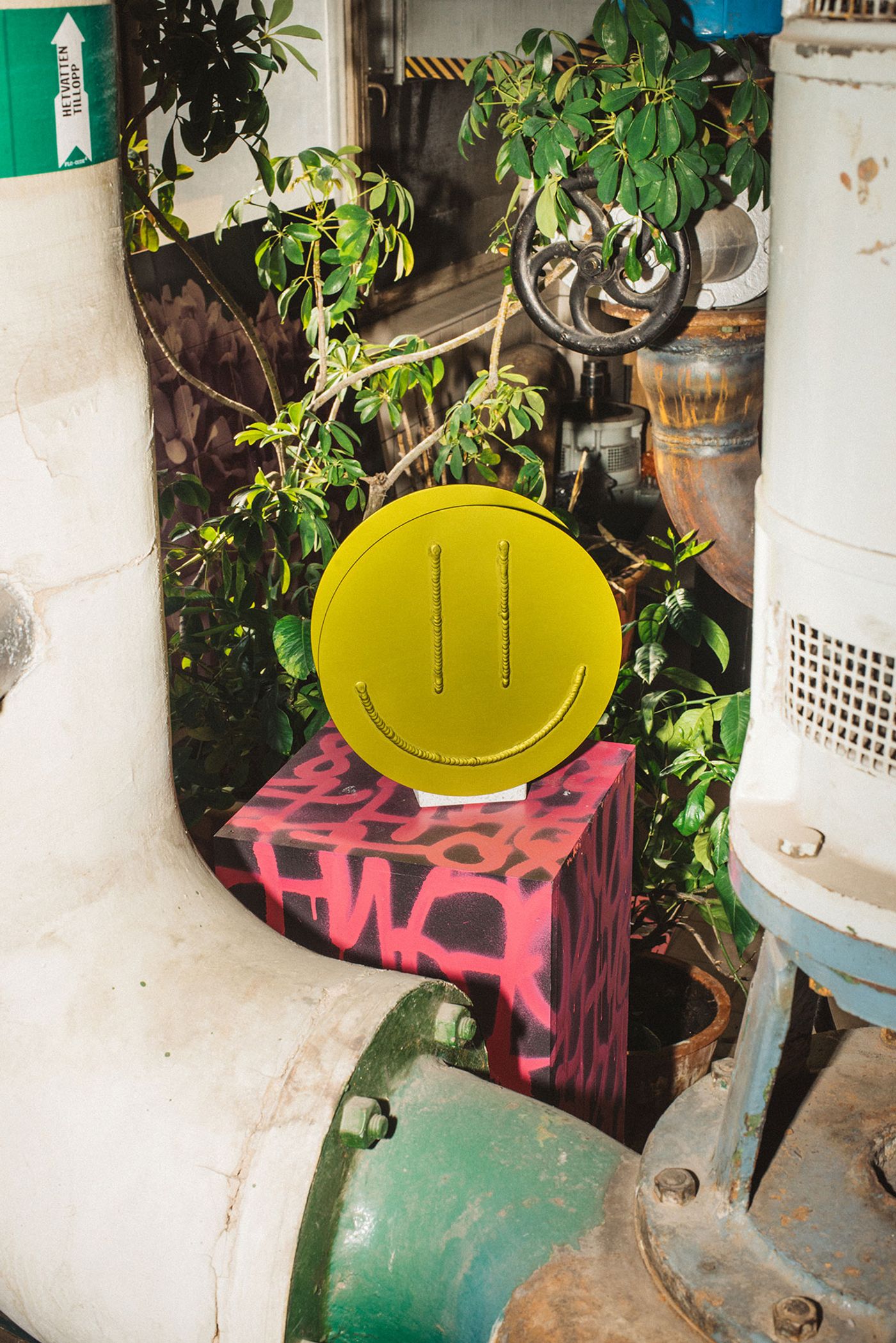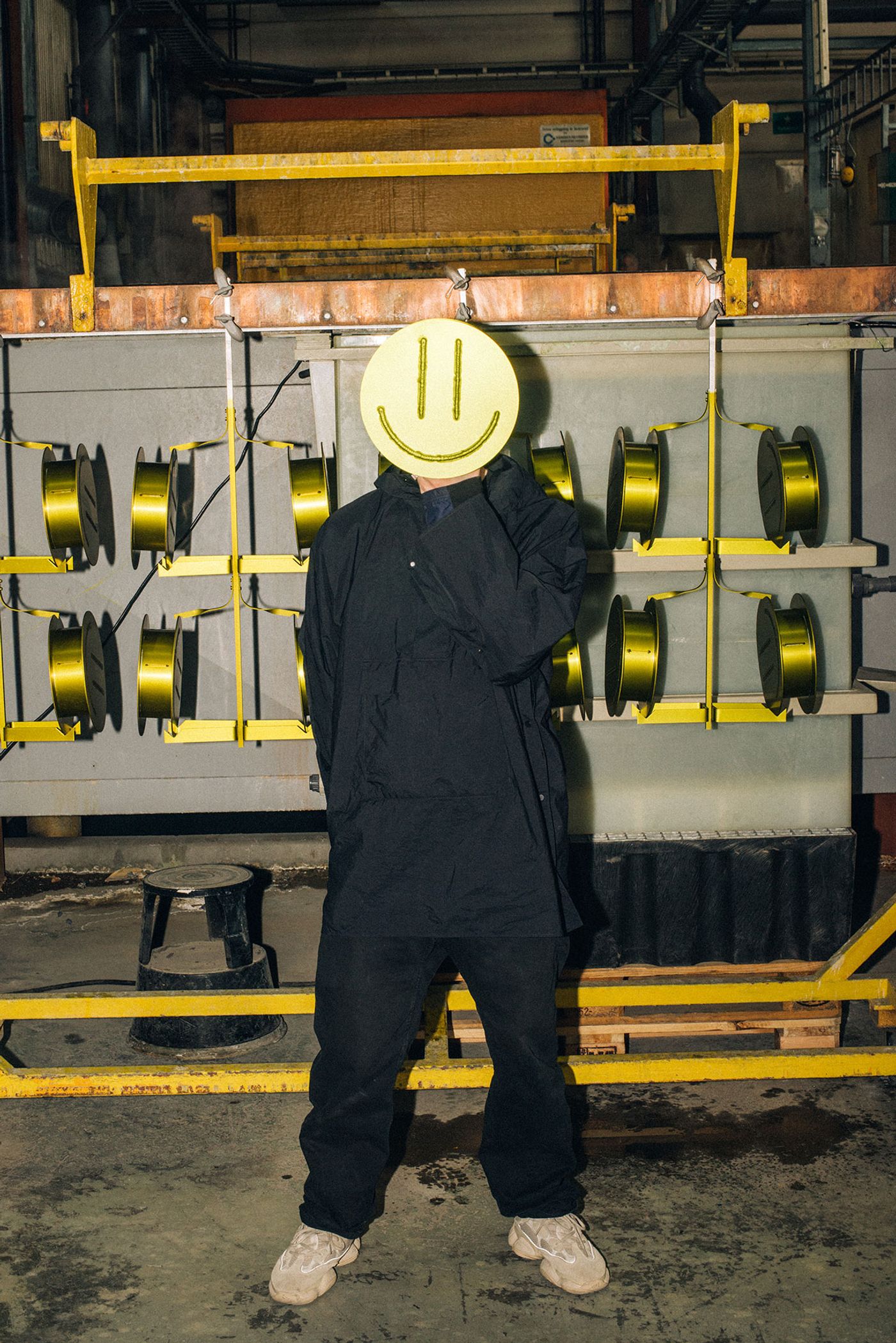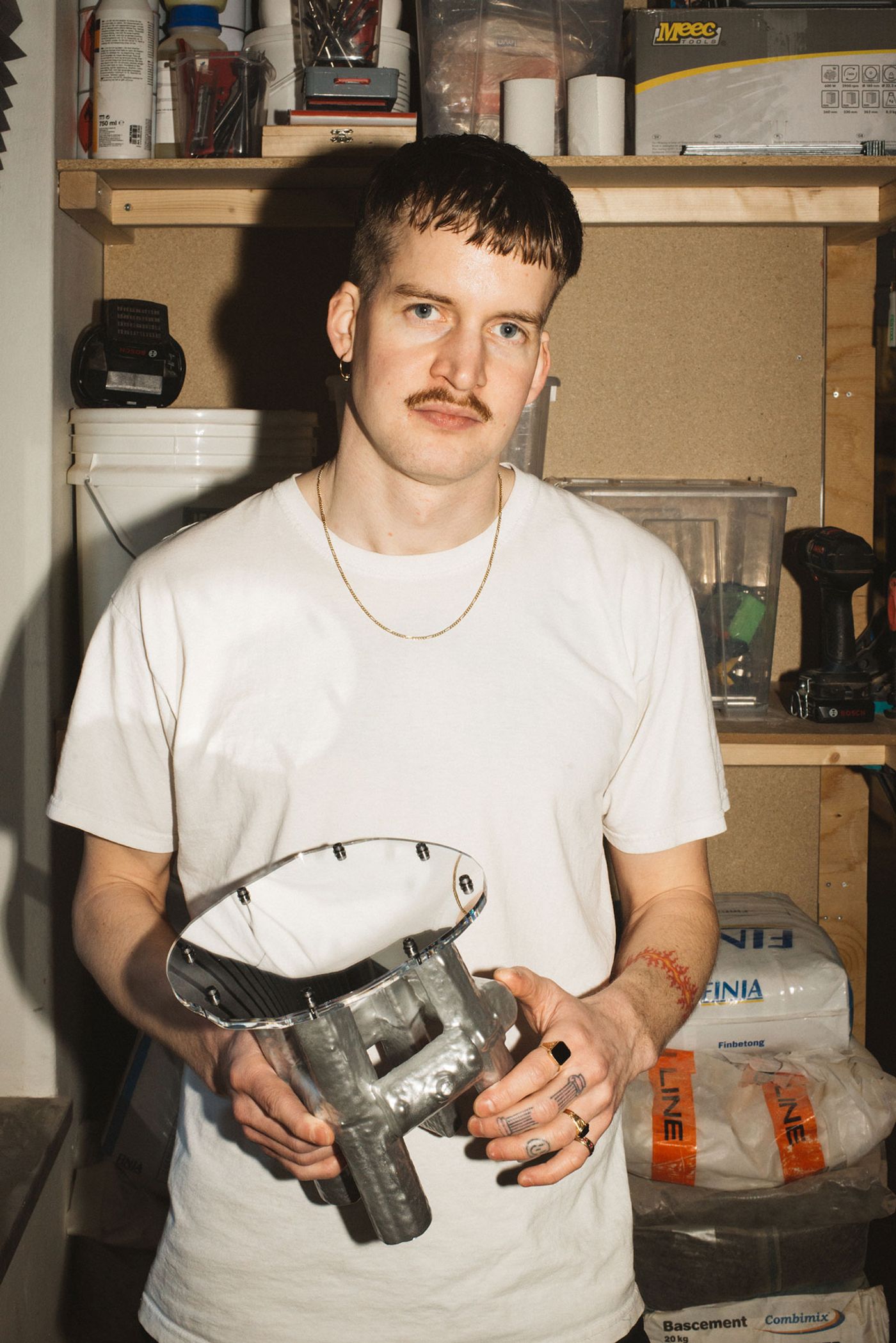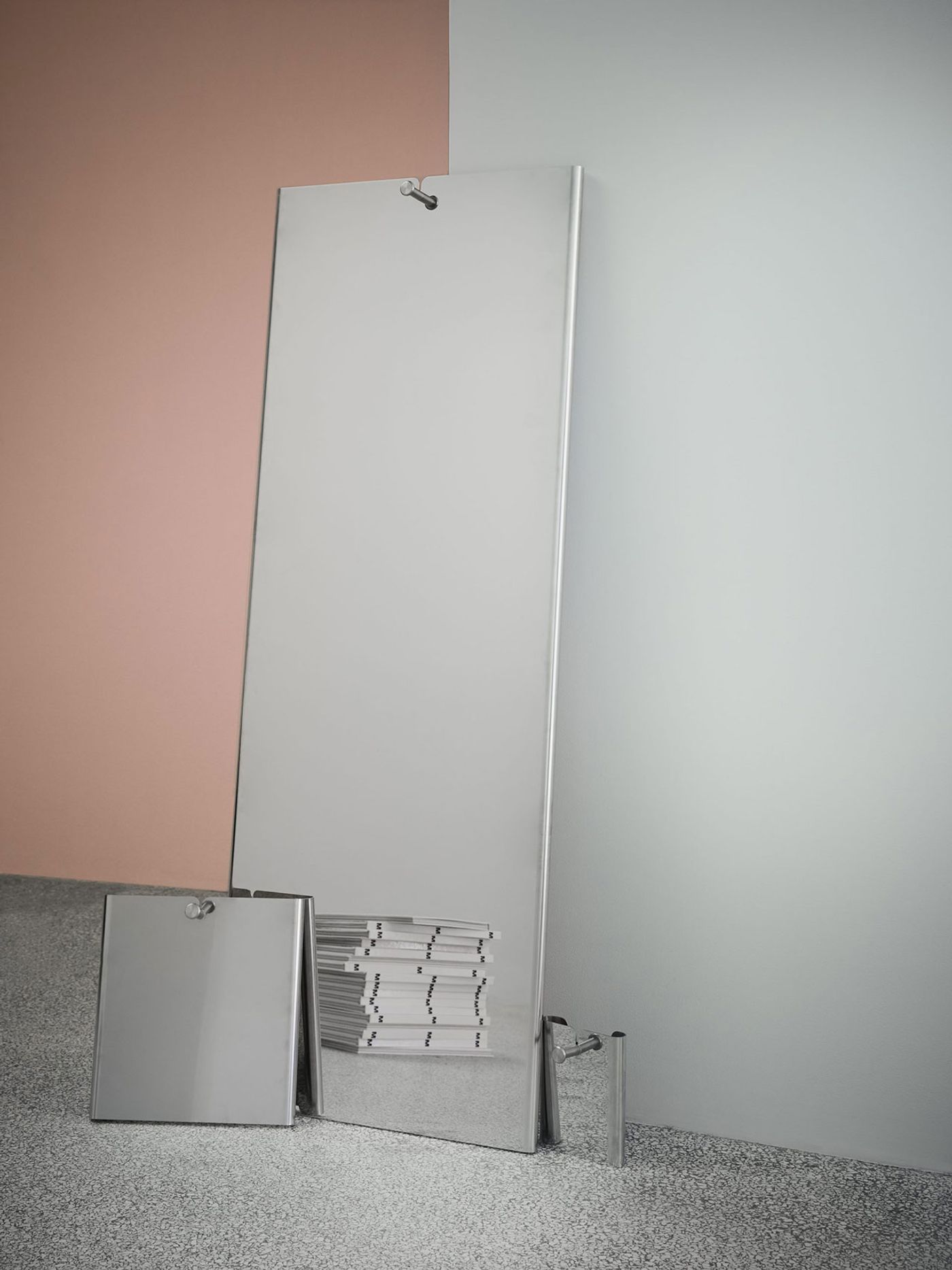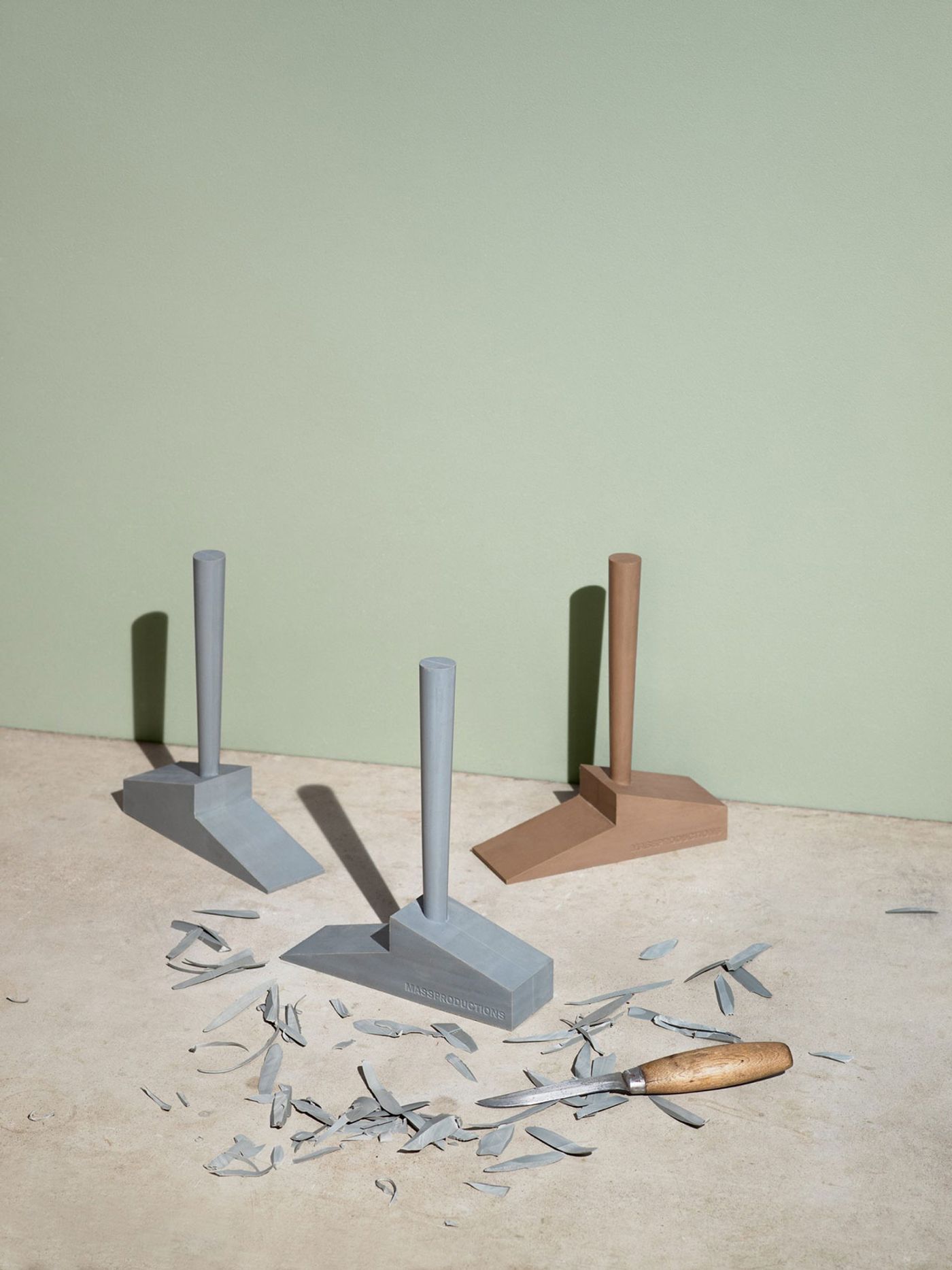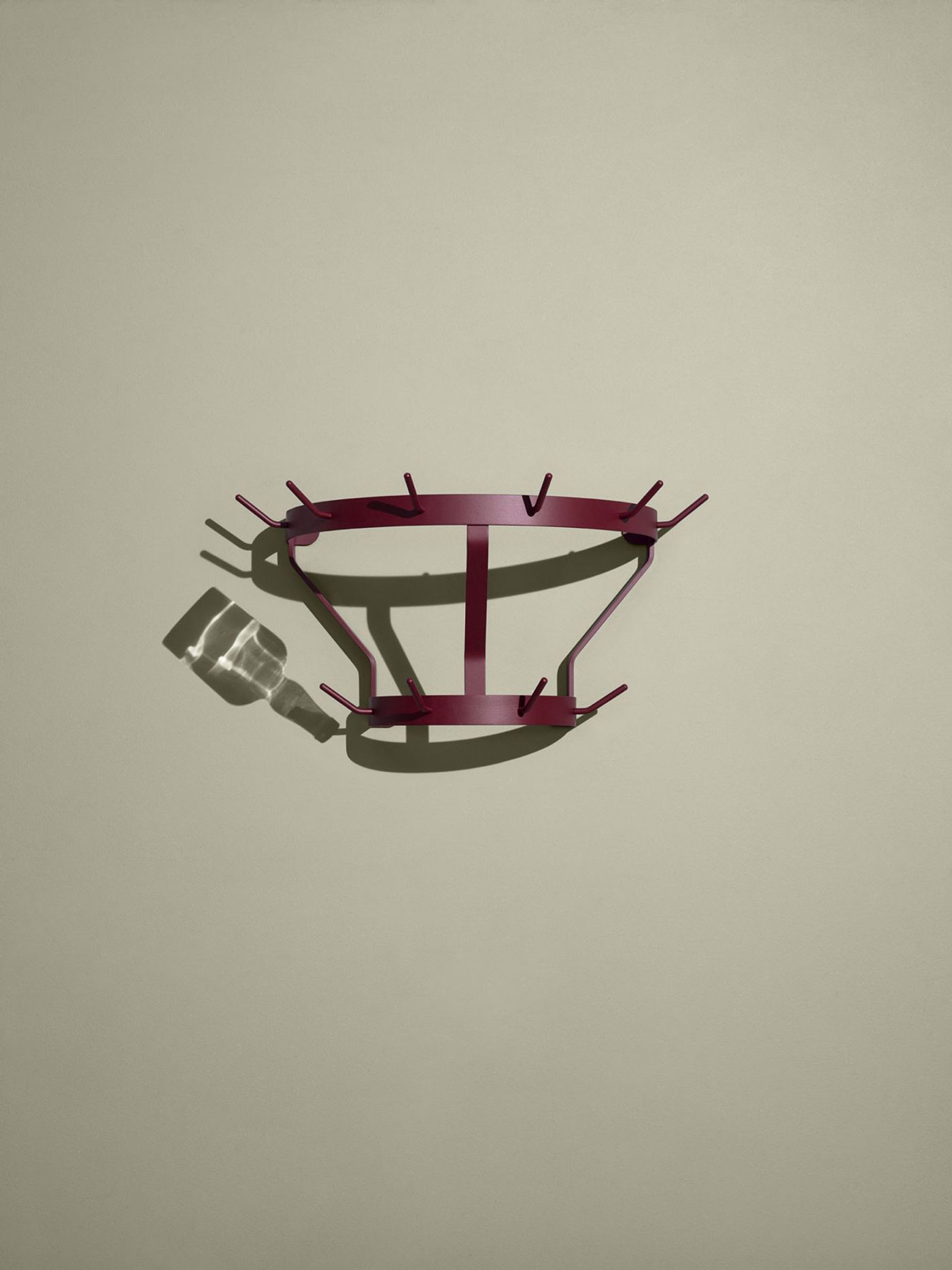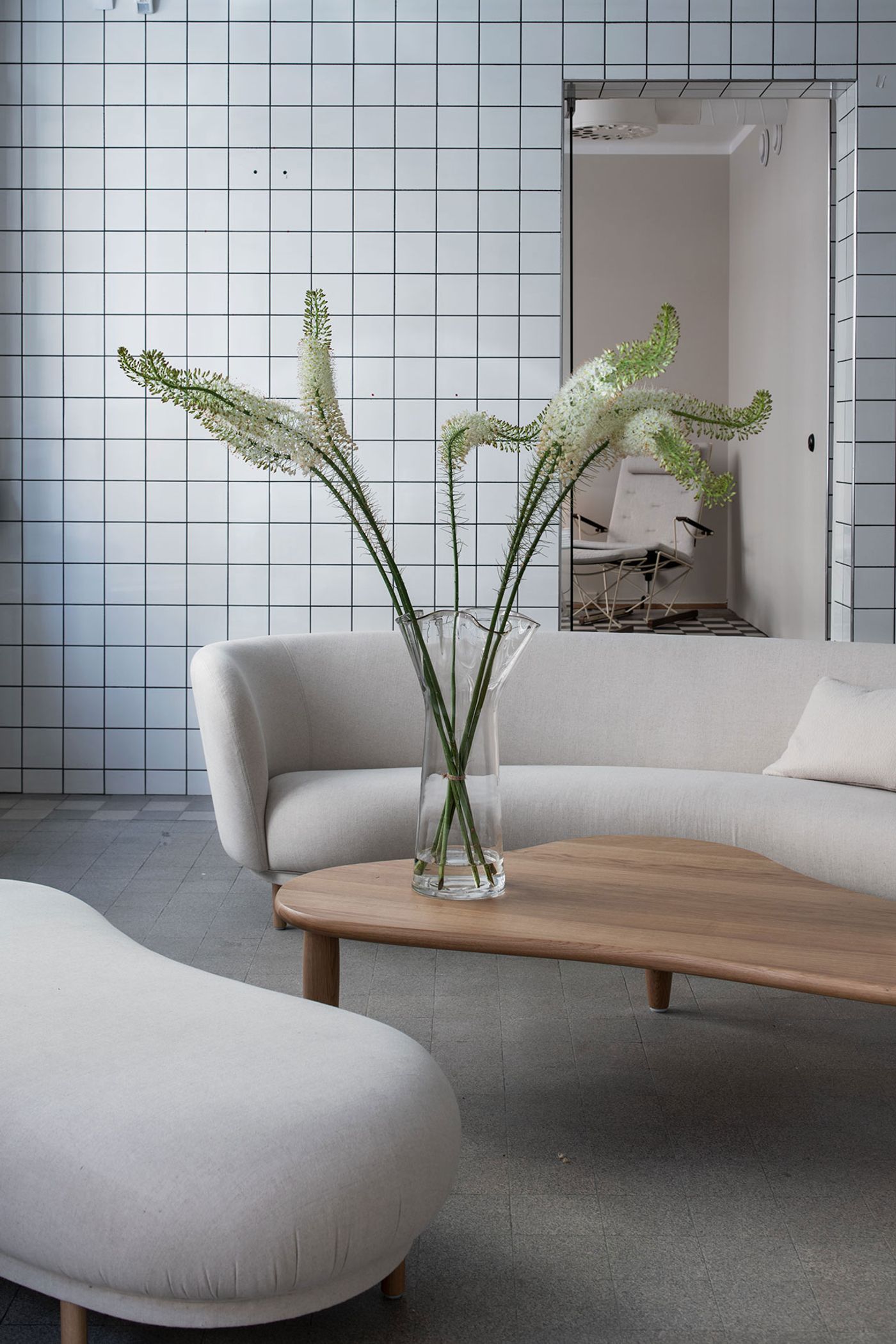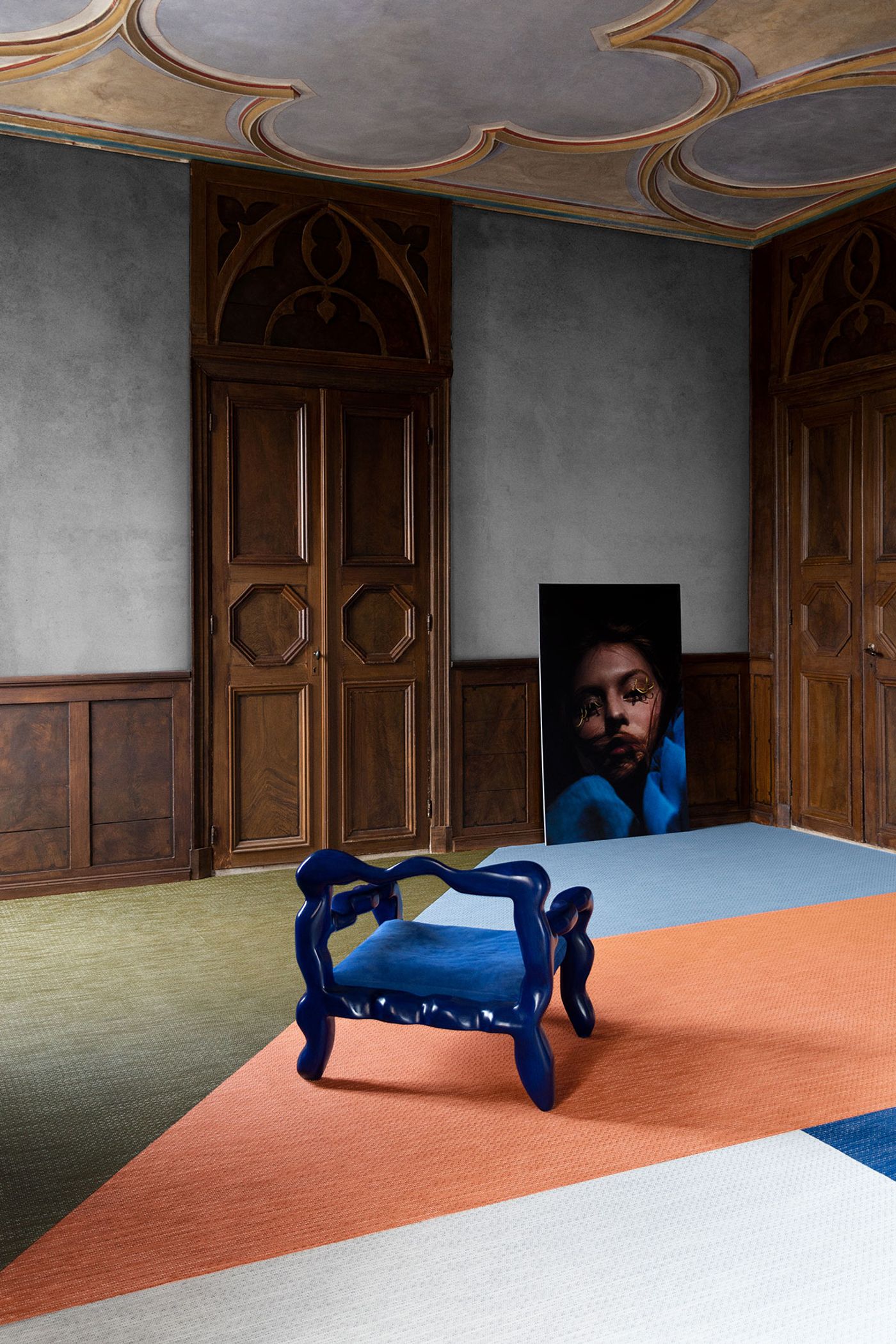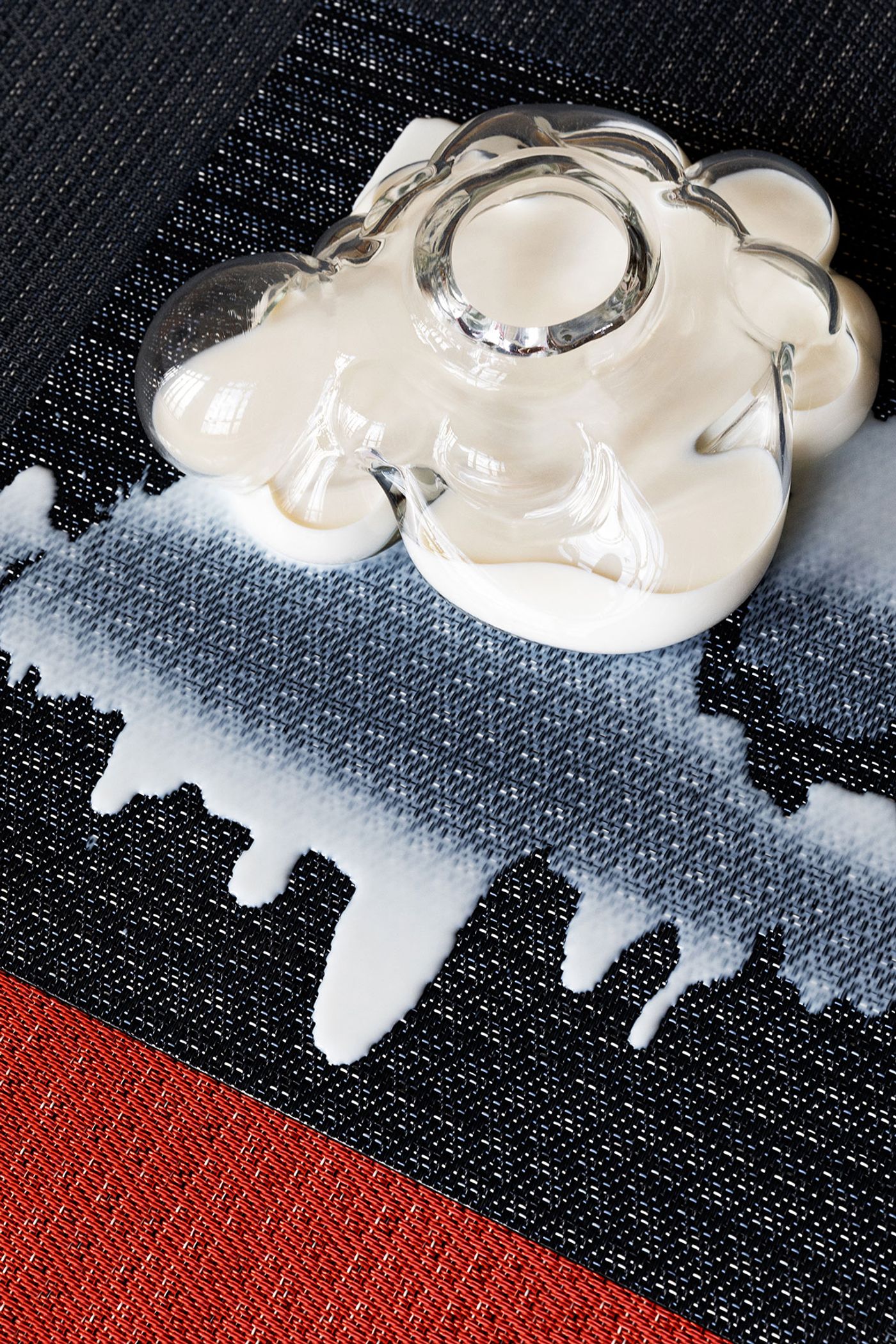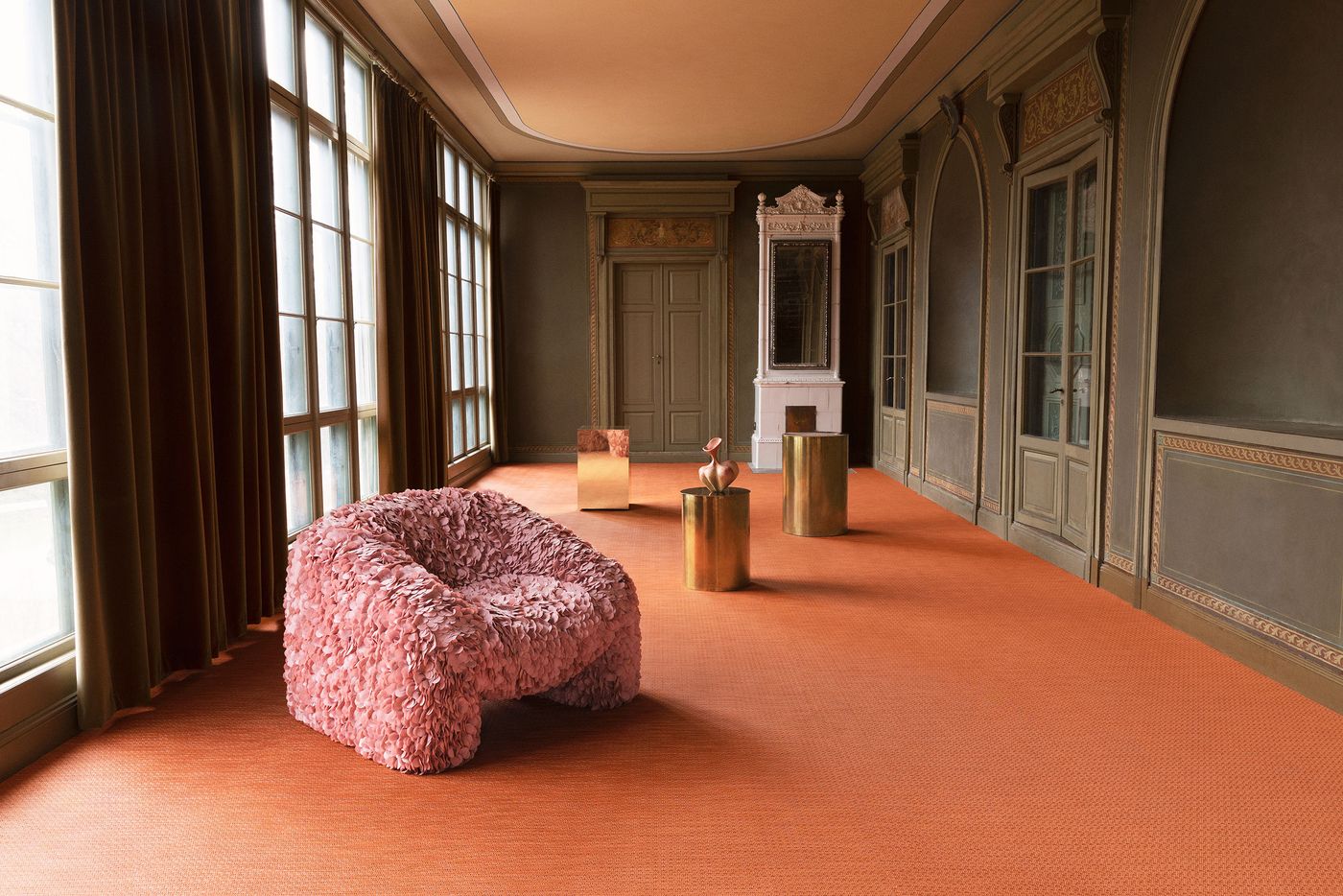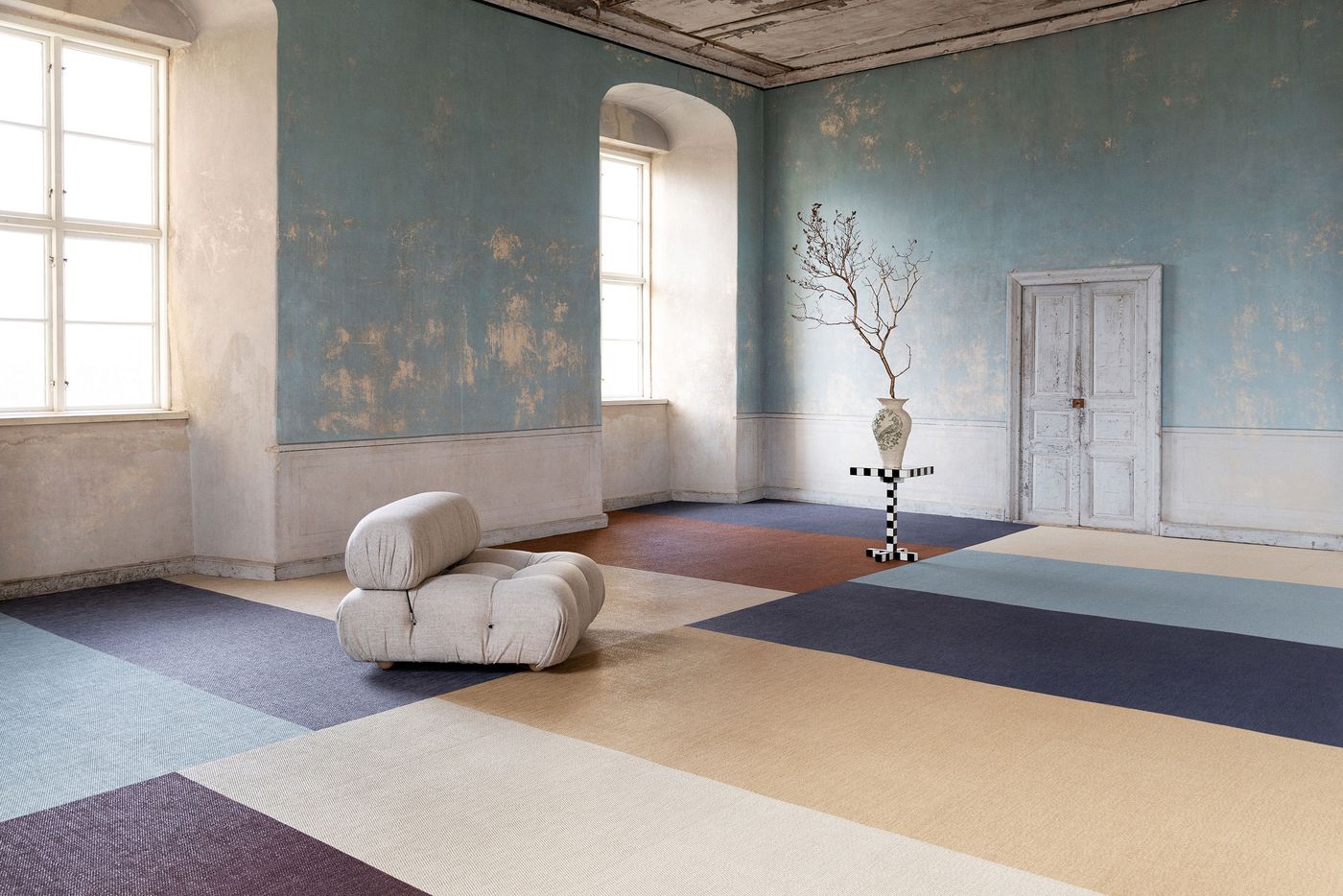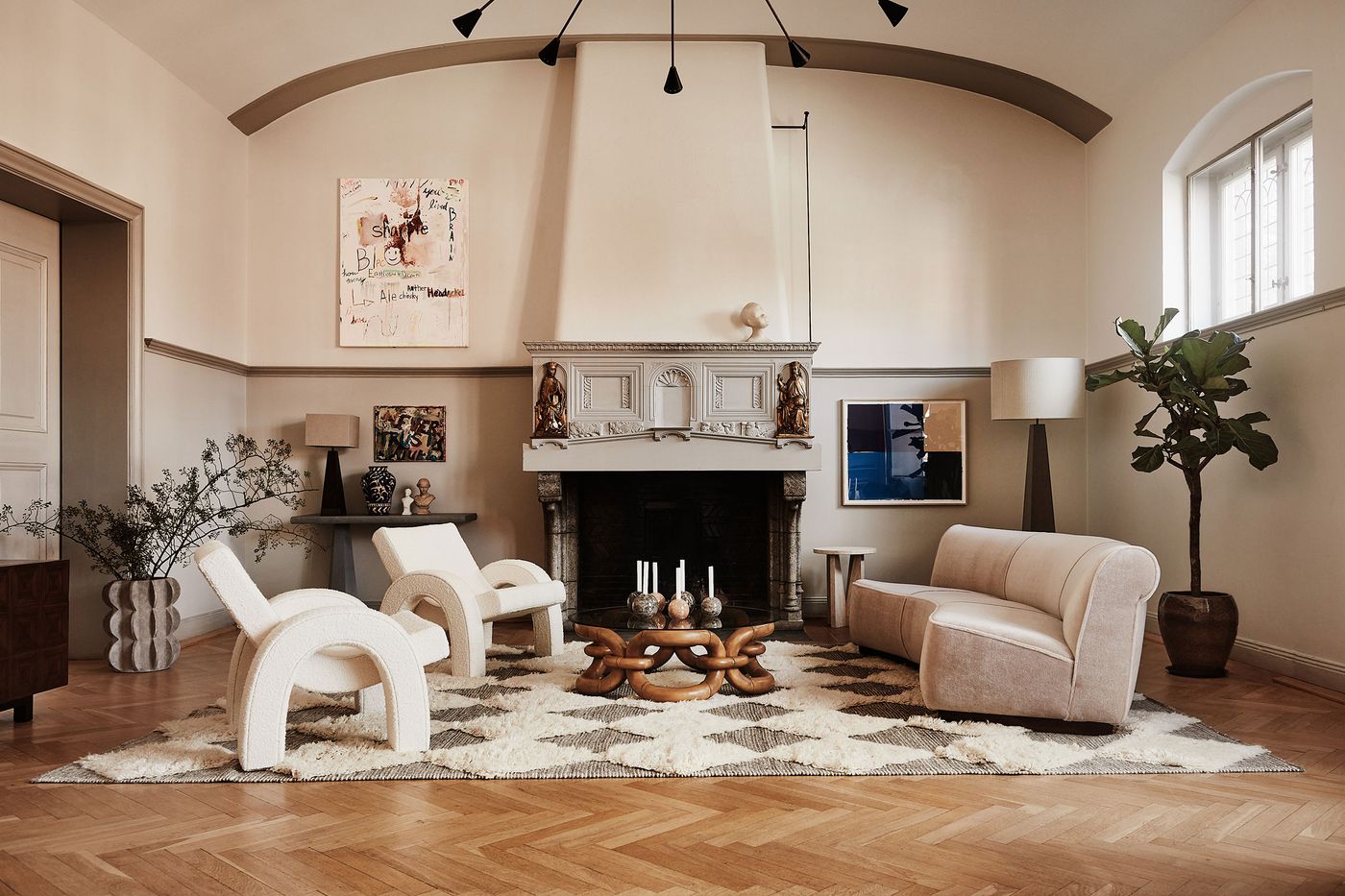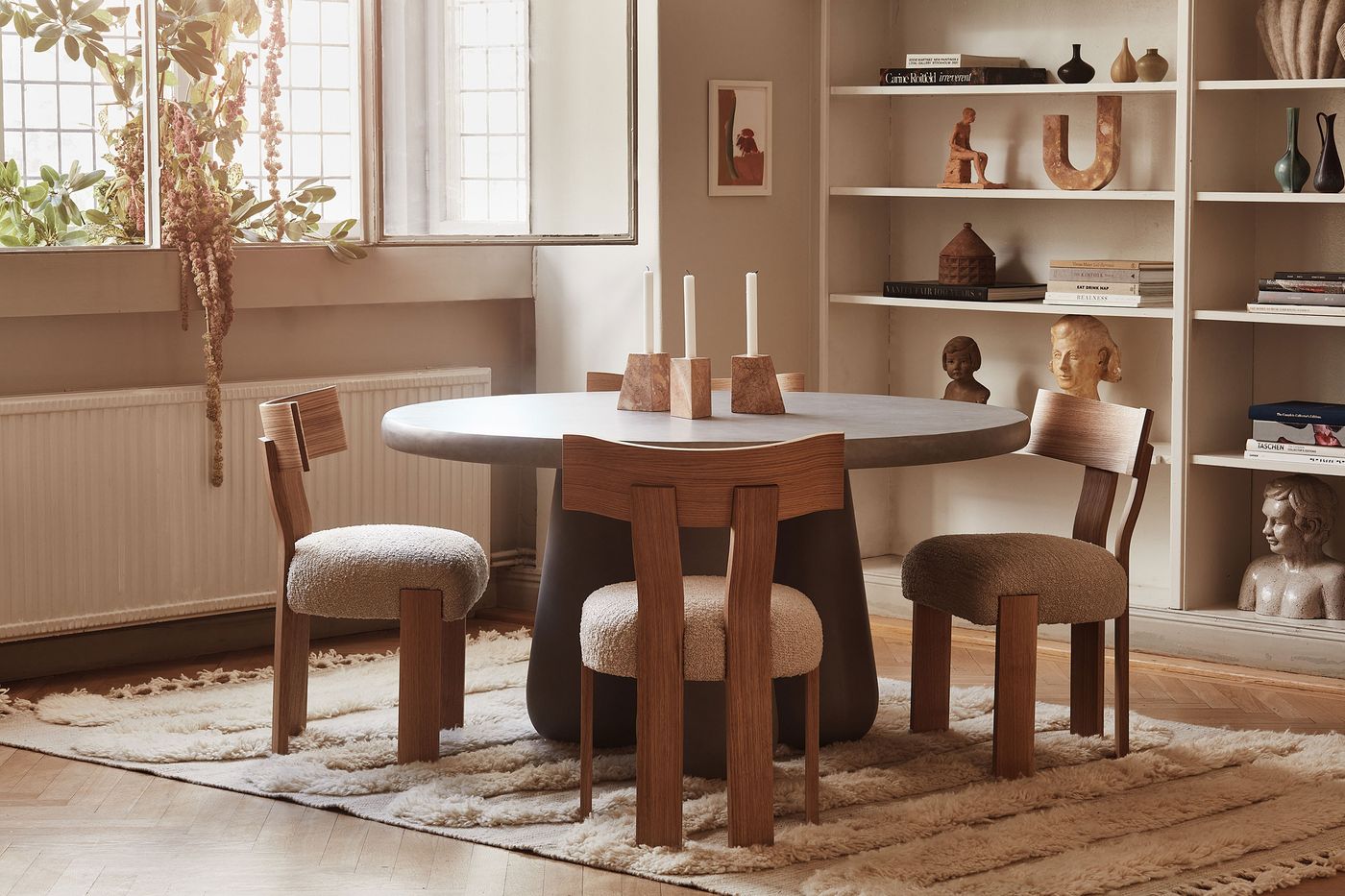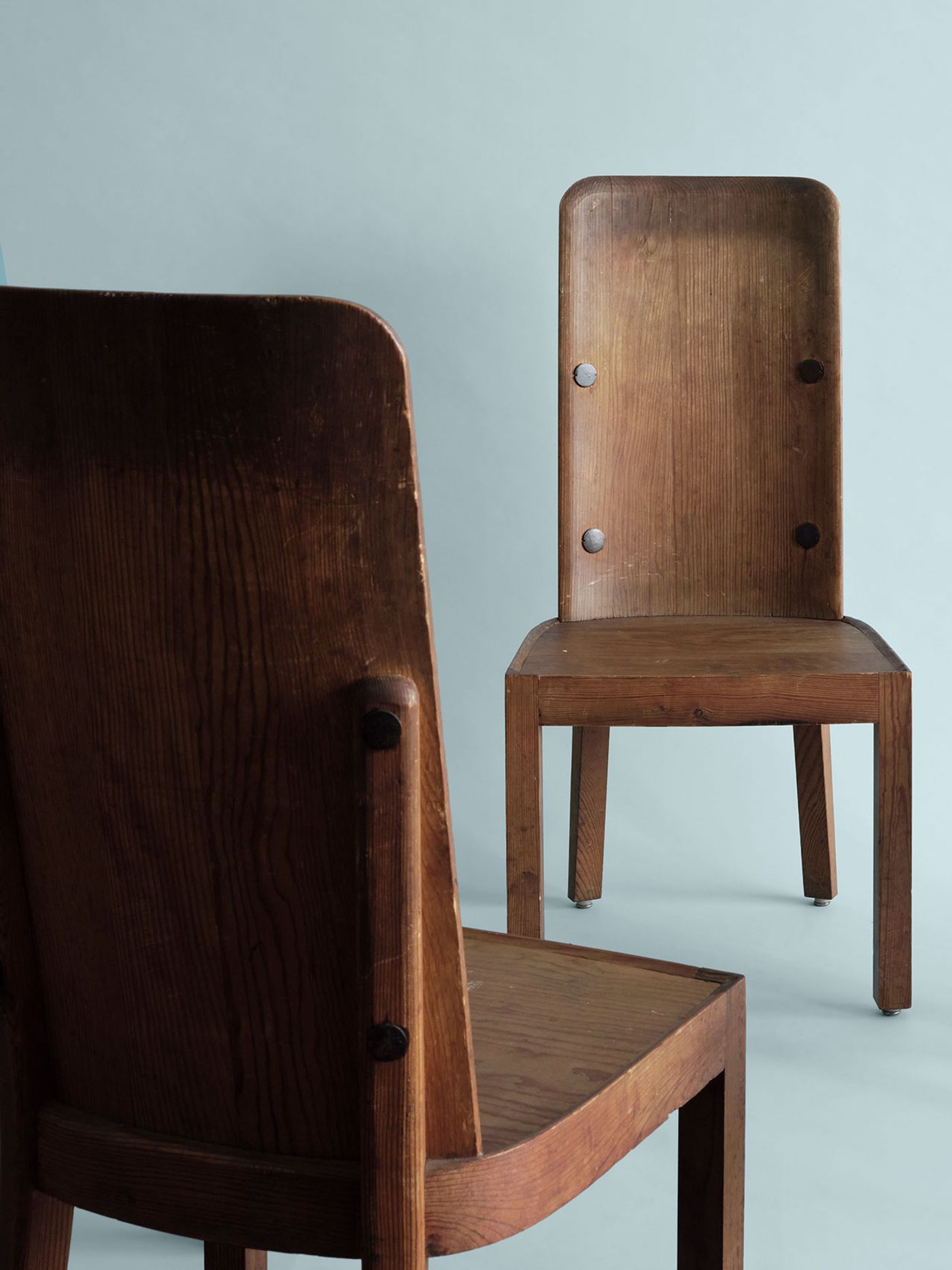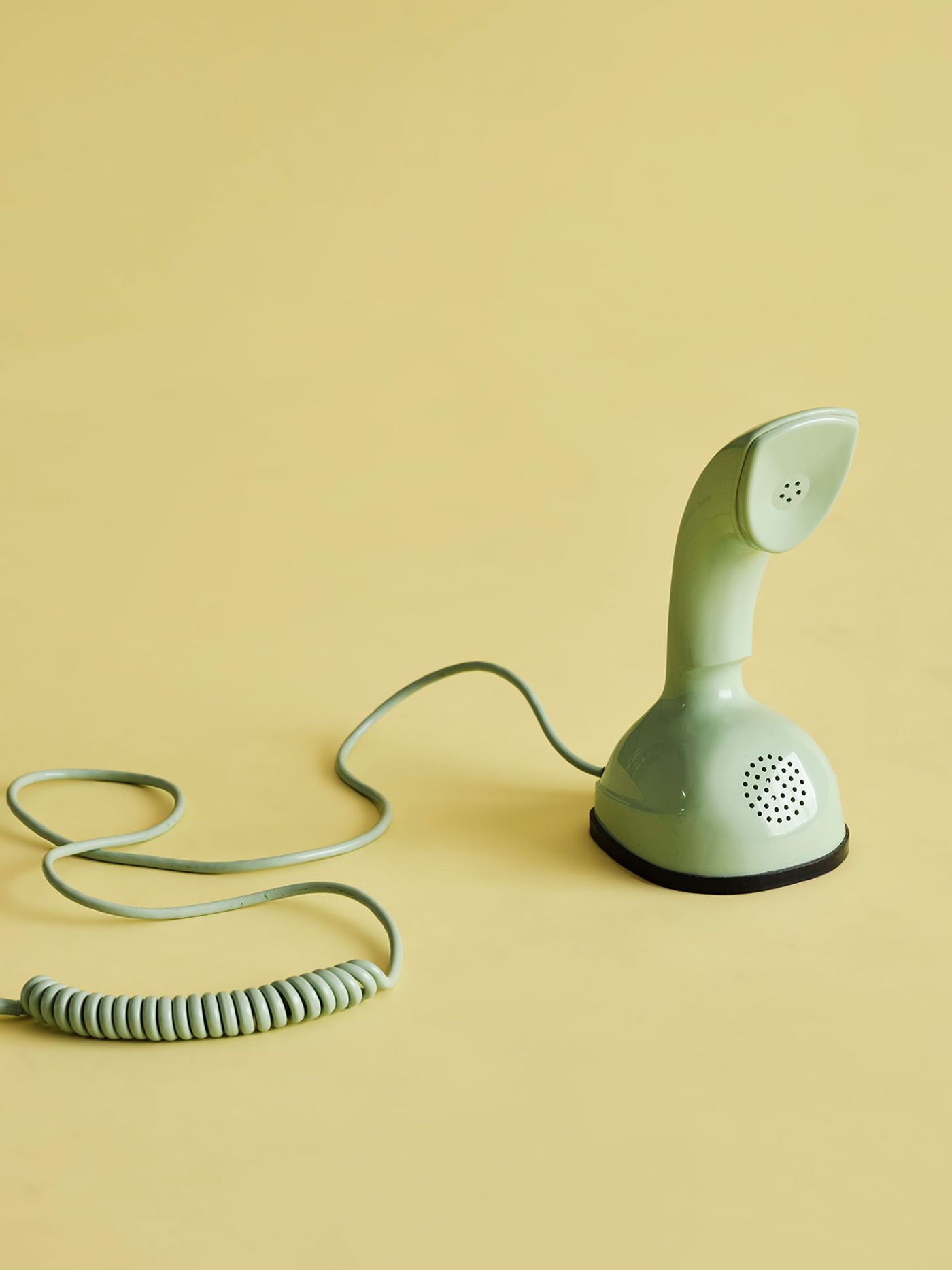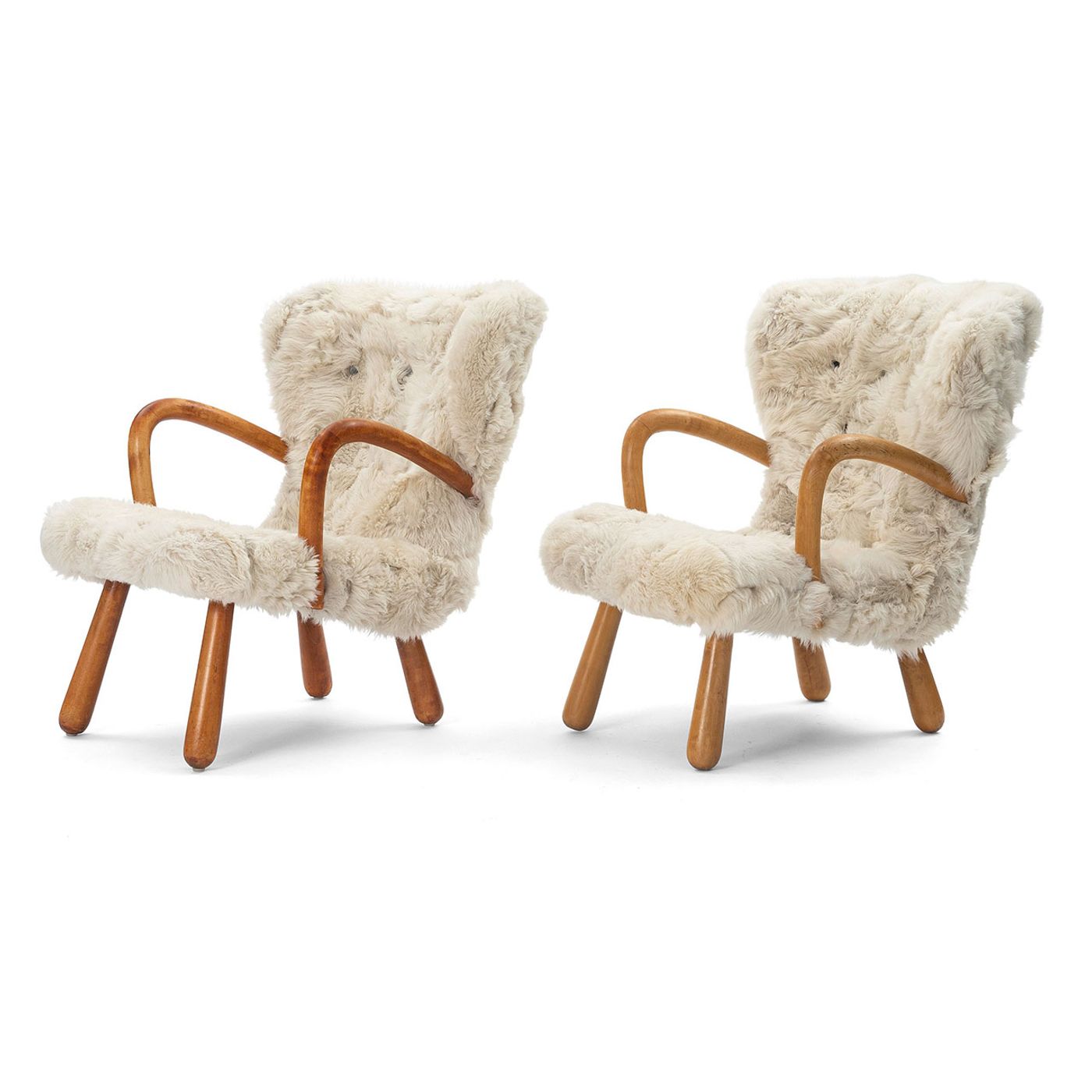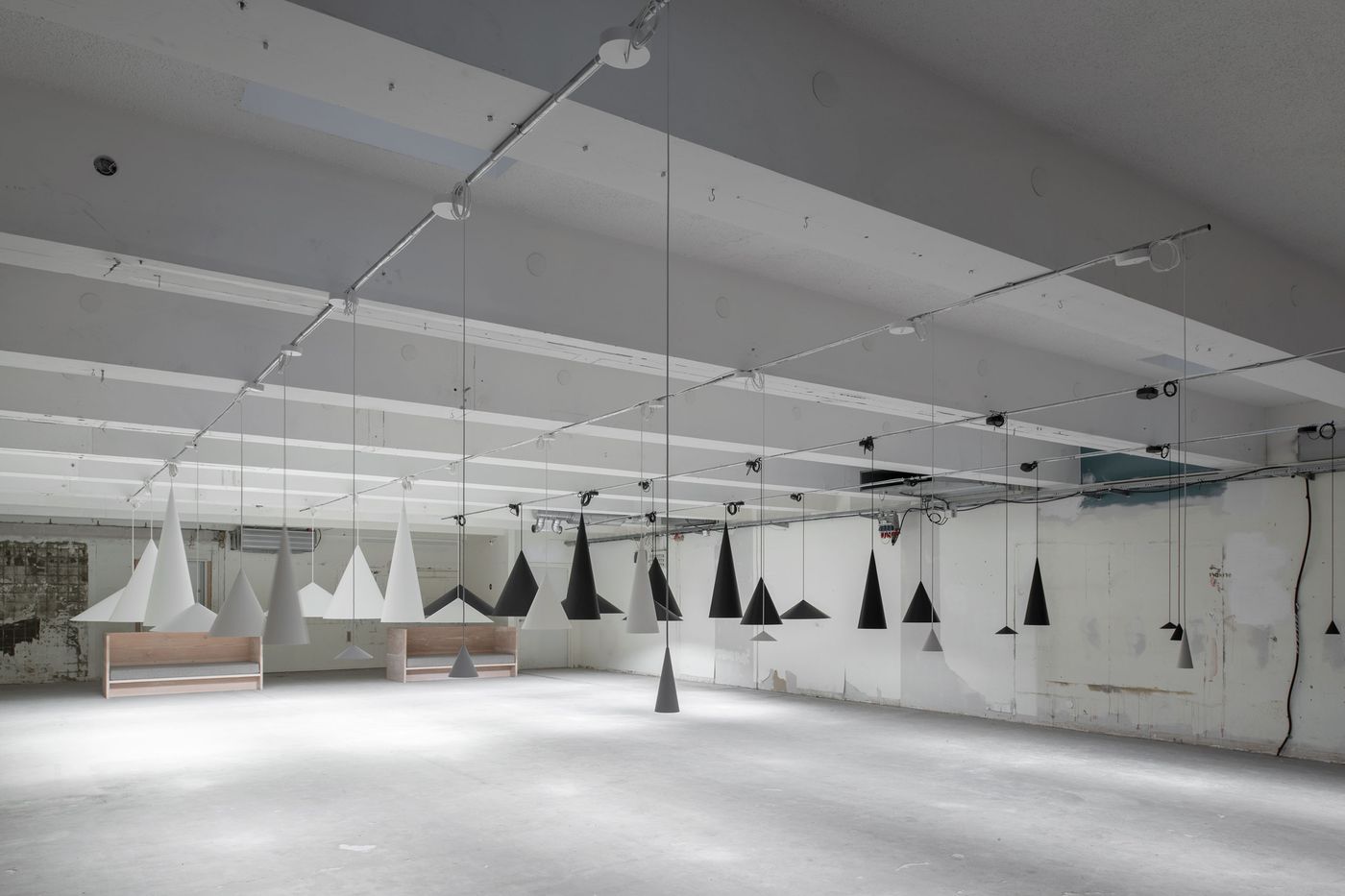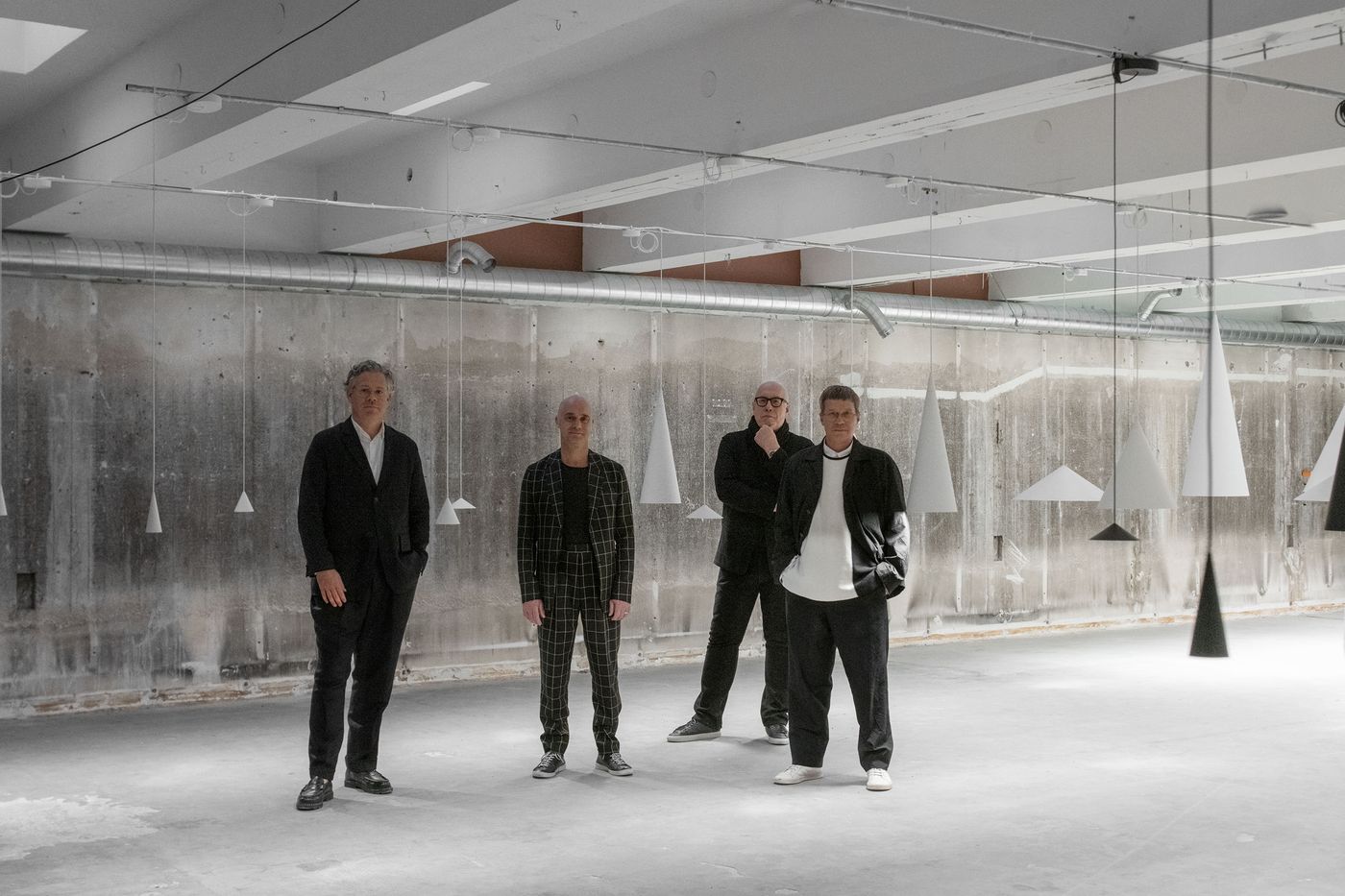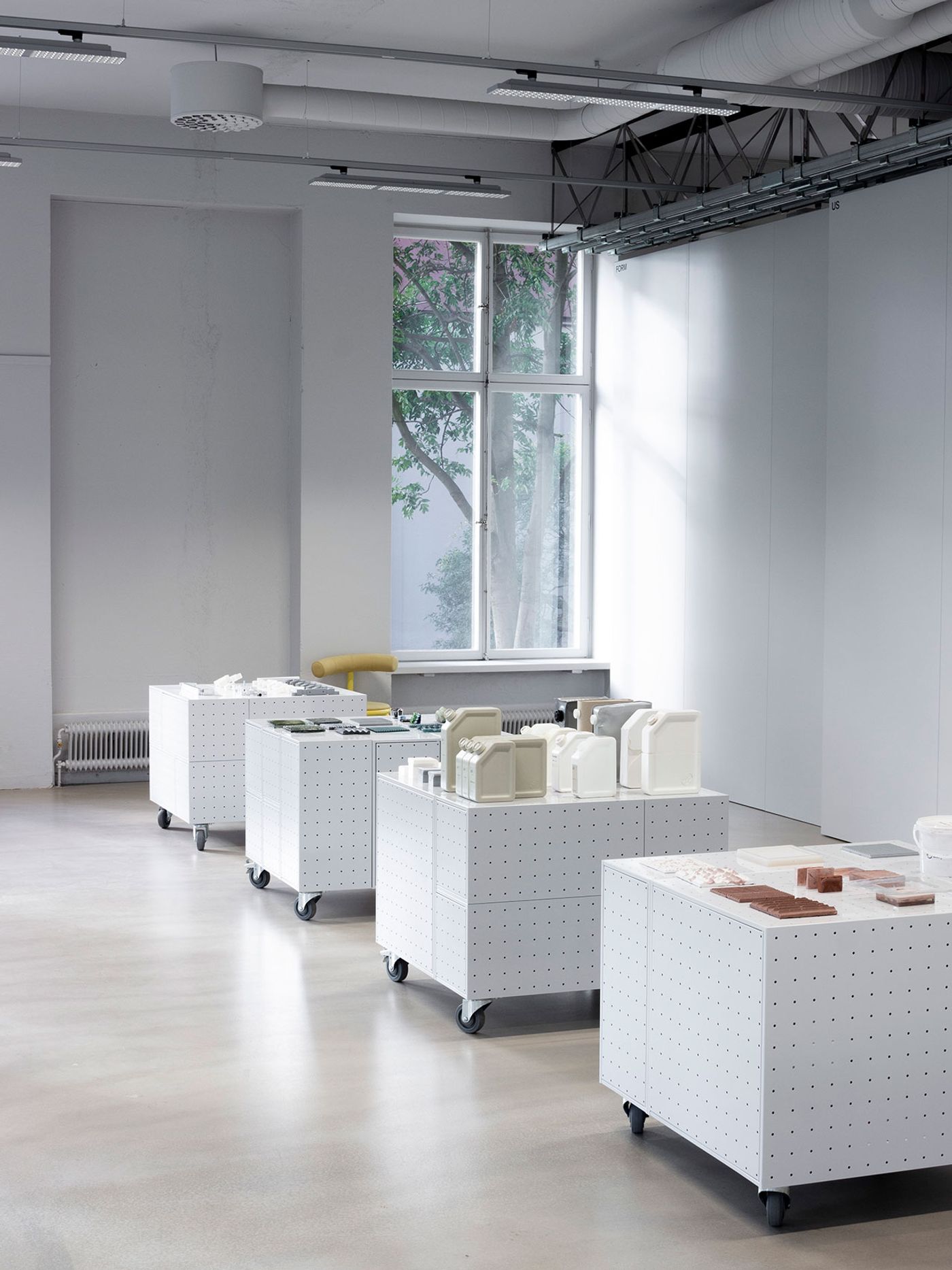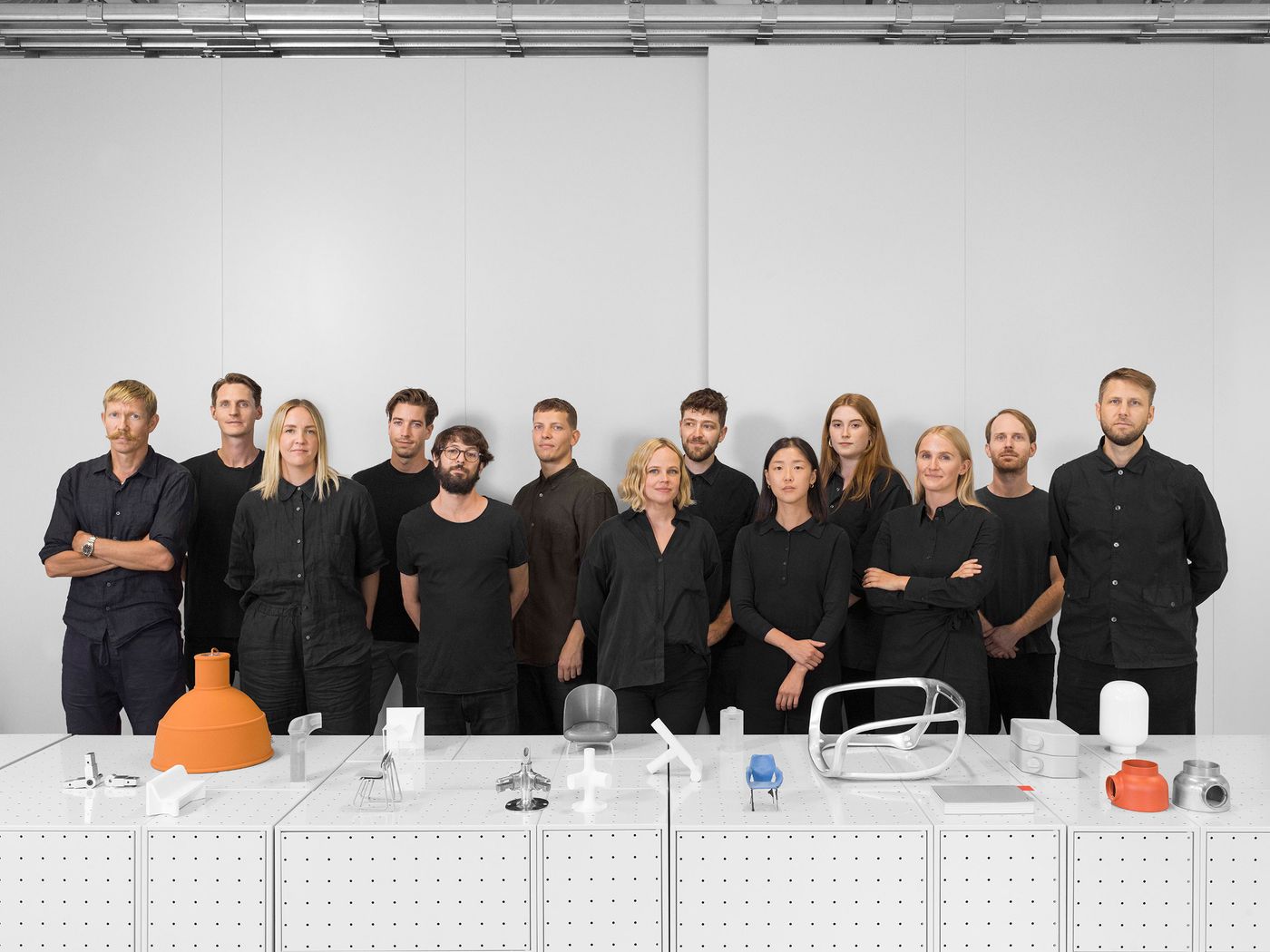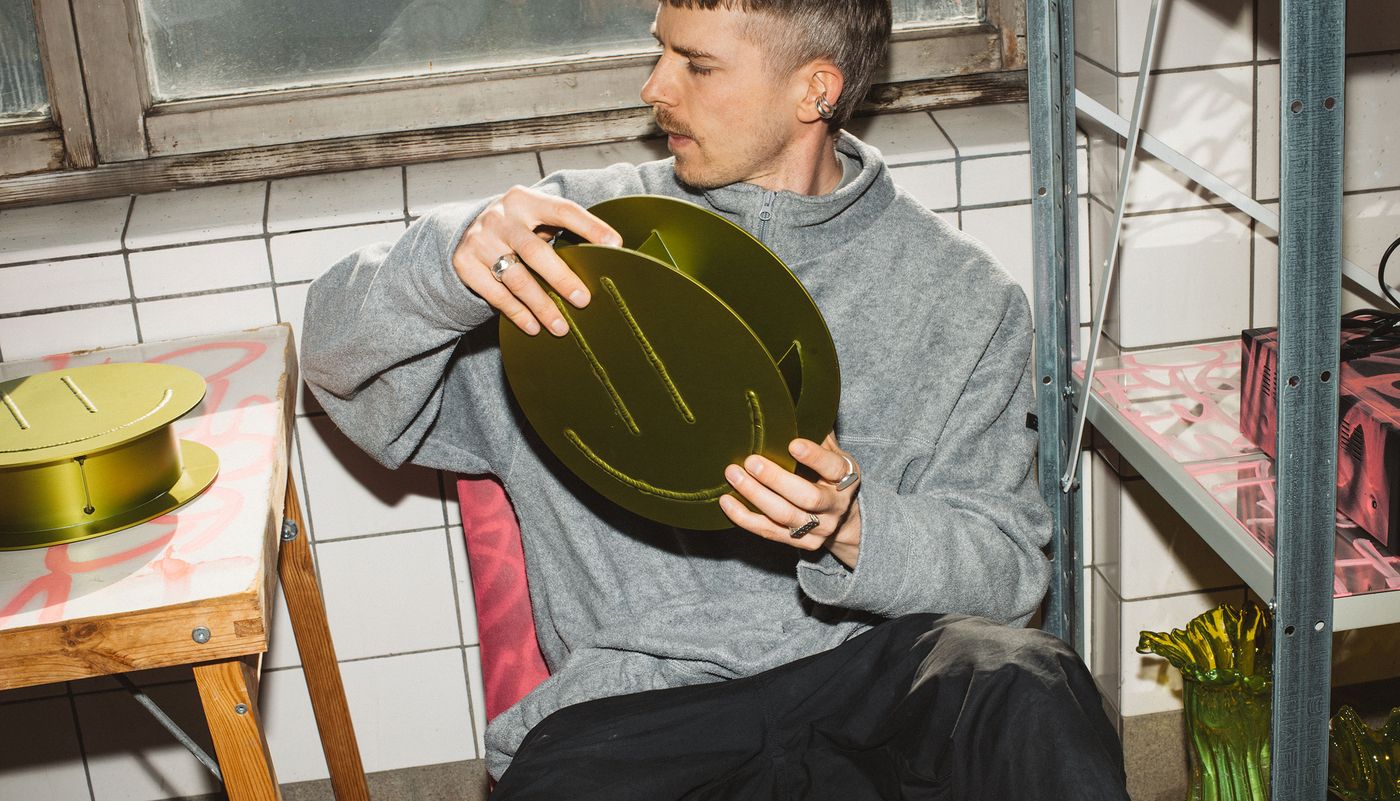
A Taste of Scandinavian Creativity: Highlights Of Stockholm Design Week 2022
Words by Yatzer
Location
Stockholm, Sweden
A Taste of Scandinavian Creativity: Highlights Of Stockholm Design Week 2022
Words by Yatzer
Stockholm, Sweden
Stockholm, Sweden
Location
It’s no secret that Scandinavian design holds a special place in Yatzer’s heart, both in terms of the soulful minimalism of the mid-century modern masters and the forward-looking ethos of today’s contemporary Nordic designers. It therefore goes without saying that we’re super enthusiastic about the annual Stockholm Design Week (SDW), so much so that we don’t mind the freezing temperatures and 4pm sunsets – the event, after all, takes place in February concurrently with the Stockholm Furniture & Light Fair. So, when it was announced earlier this year that SDW 2022 would be pushed back from its scheduled date to September 5 to 11 due to the coronavirus, there was no complaint from us! Although this one-off edition took place without the Fair, which was postponed for 2023, the good weather more than compensated for the leaner program and fewer exhibitors. Stockholm is one of the most beautiful cities in the world so hopping from one venue to the next was a pure delight.
A champion of innovation and experimentation, SDW showcases the best that contemporary Scandinavian design has to offer, and this edition didn’t disappoint. New collections from some of our favourite brands, surprising collaborations with international designers, interactive exhibitions and studio visits, plus eclectically curated lunches and dinners in design-led venues, made for a satisfying and inspiring couple of days. Below are just some of the things that stood out for us.
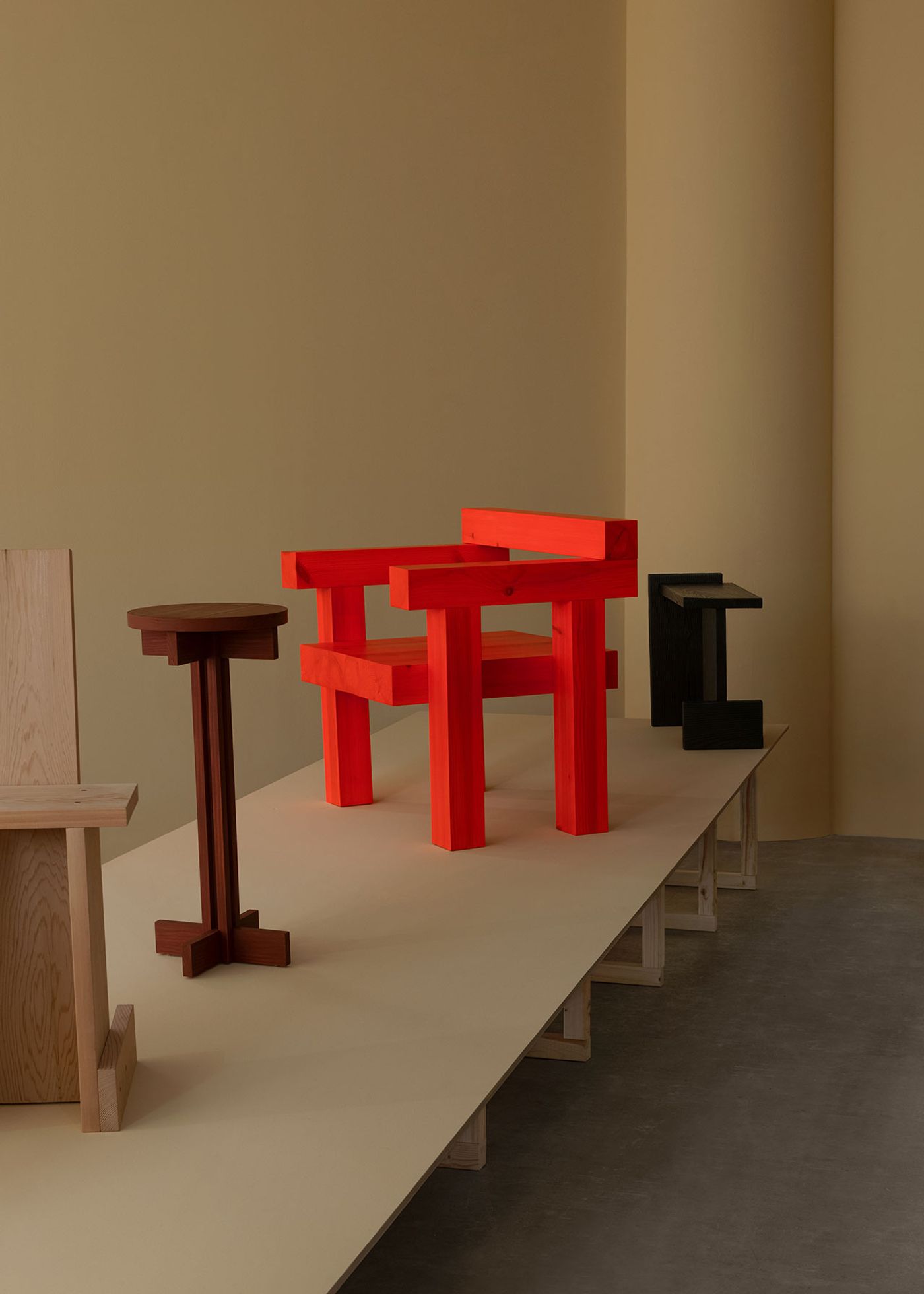
Moving Forward exhibition view at NK curated by Kråkvik & D'Orazio.Photography by Erik Lefvander.
Although a neutral colour palette is one of the hallmarks of Scandinavian design, it by no means represents a strict rule as French designer India Mahdavi’s staged takeover of Svenskt Tenn’s Stockholm gallery space attests. Often referred to as “the Queen of Colour”, Mahdavi boldly combines colours, textures and shapes for a neo-baroque style that is joyful yet elegant. For this collaboration, her vibrant aesthetic converses with Svenskt Tenn’s iconic prints and objects in particular, the work of Josef Frank, one of the brand’s most prestigious mid-century designers. Make no mistake, this in no subtle homage - Mahdavi has swathed the entire showroom, from the walls to the furniture and lighting pieces, in Frank’s ‘Vegetable Tree’ print, a multicoloured composition of fruits and flowers. Stepping into the orchard-like space, an upbeat feeling of blissful serenity overtook us. Fittingly titled “Frankly Yours”, the exhibition, which runs until October 23, 2022, also includes new pieces by Mahdavi such as a floor lamp based on Frank’s ‘2326’ model, and pewter trays conceived as a tribute to Svenskt Tenn’s founder, Estrid Ericson.
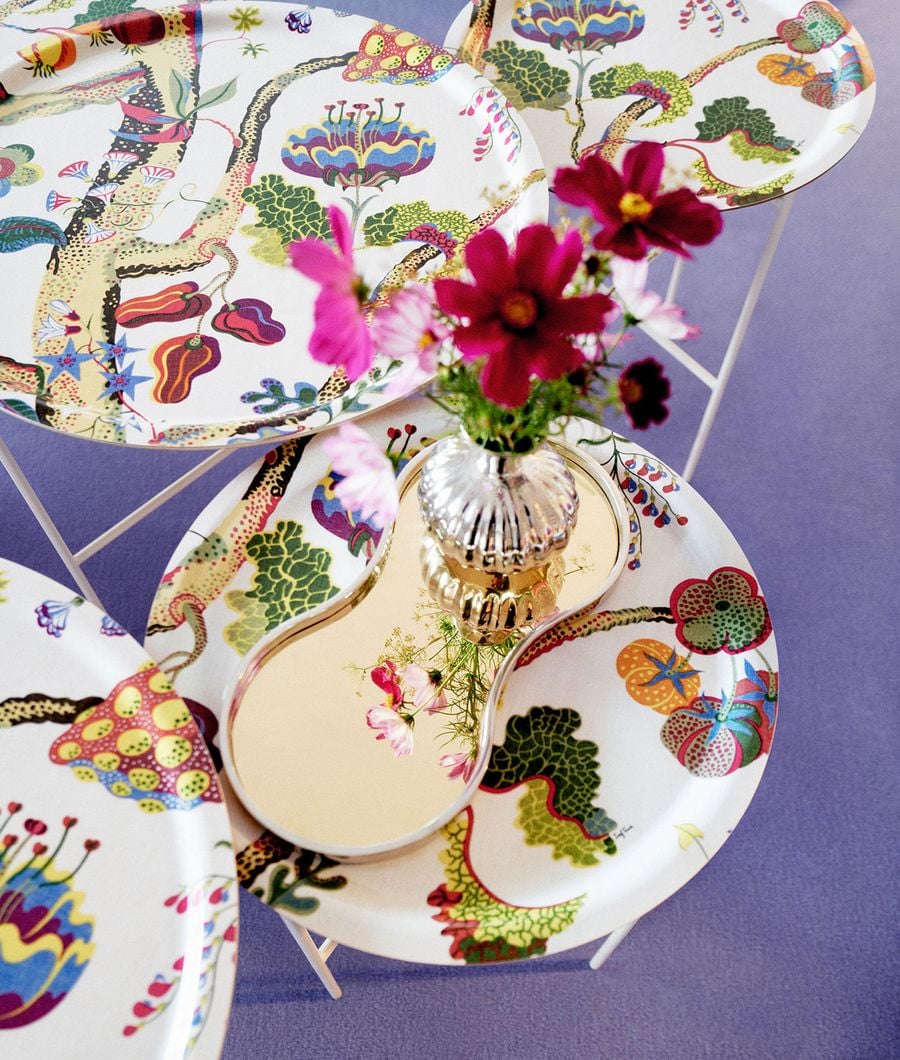
'Frankly Yours' collection by India Mahdavi for Svenskt Tenn.Photography courtesy of Svenskt Tenn.

'Frankly Yours' collection by India Mahdavi for Svenskt Tenn.Photography courtesy of Svenskt Tenn.
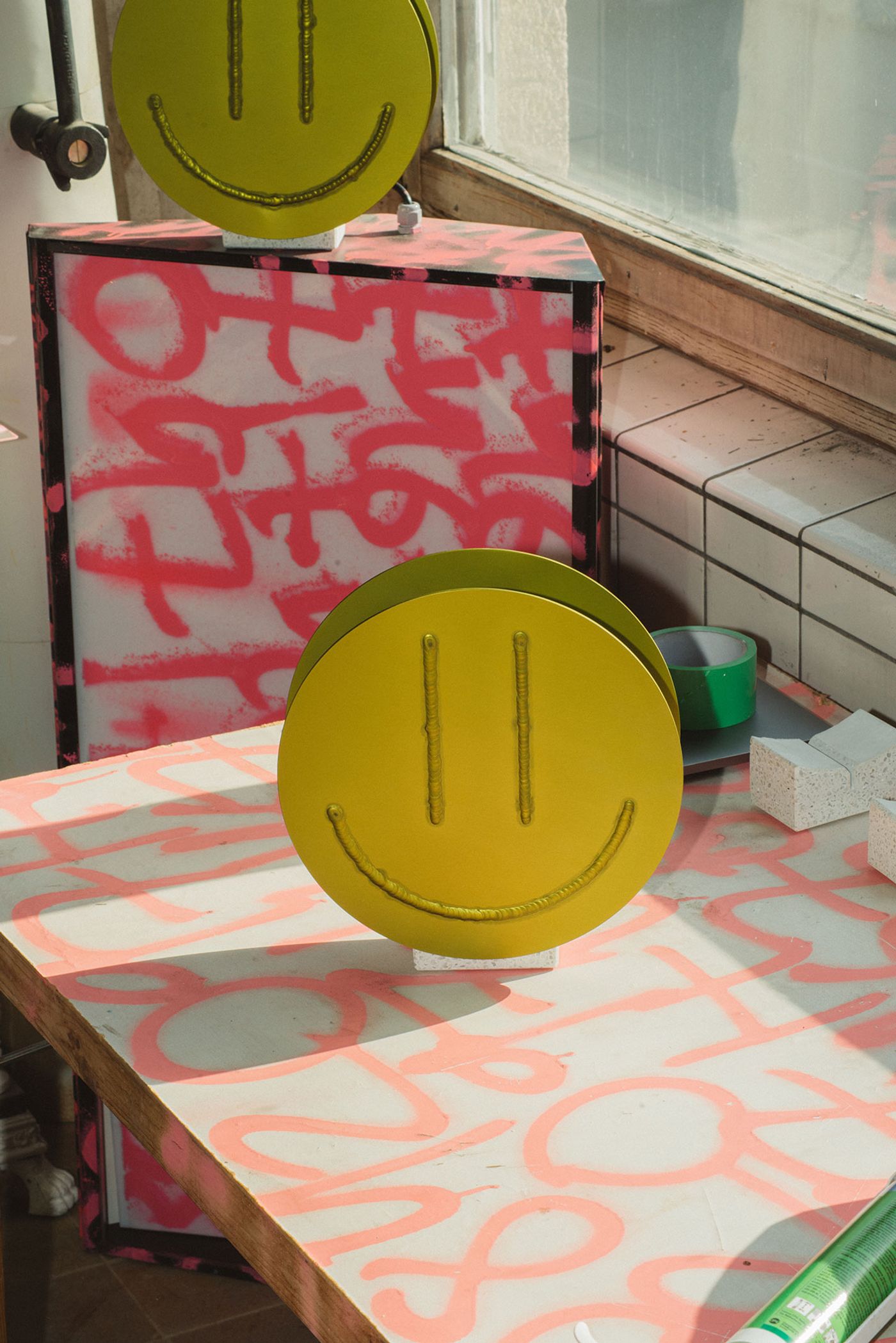
'Acid Vase' by Gustaf Winsth for Hem X series curated by Arranging Things.Photography courtesy Hem.
Another international collaboration that caught our eye was that of Korean designer Kwangho Lee with Hem. Passionate about materials and craft, Lee is known for his experimental designs and innovative fabrication methods. For HEM, he designed “Hunk”, a blocky armchair made entirely from natural materials whose elemental form belies a ground-breaking construction, and “Glyph”, a series of tables made of folded and bent metal sheets that can be flipped and turned to reveal different profiles. Also on display at Hem’s Stockholm showroom were three new designer collaborations curated by studio Arranging Things for Hem X, including Gustav Winsth’s limited-edition “Acid Vase” which is made from two anodized aluminium disks welded together in the form of a smiley face and fixed on a terrazzo concrete base, and Josefin Eklund’s “Neon Globos”, squiggly coloured neon tubes fixed on cloud-shaped metallic screens.
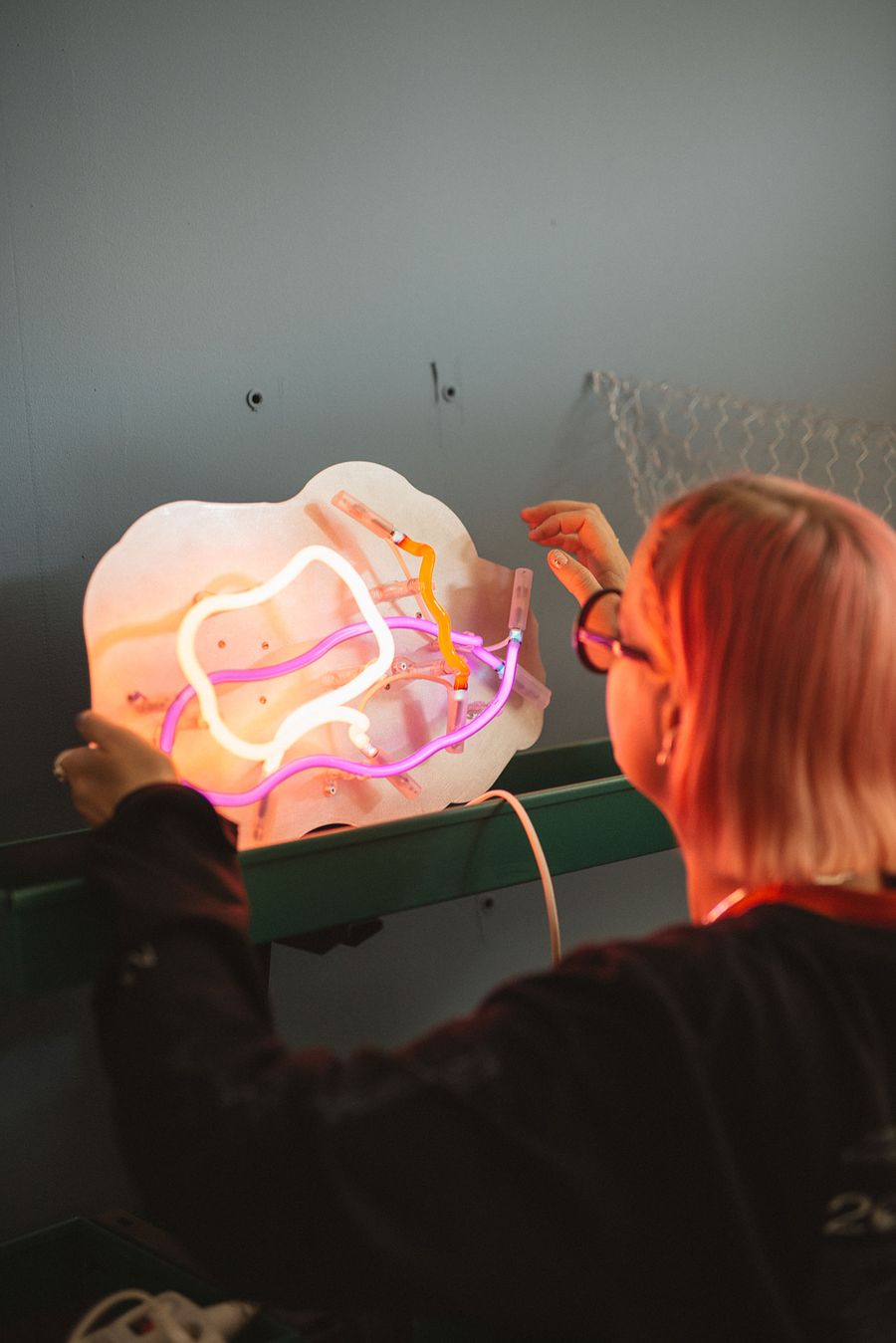
'Globos Neon' by Josefin Eklund for Hem X series curated by Arranging Things.Photography courtesy Hem.
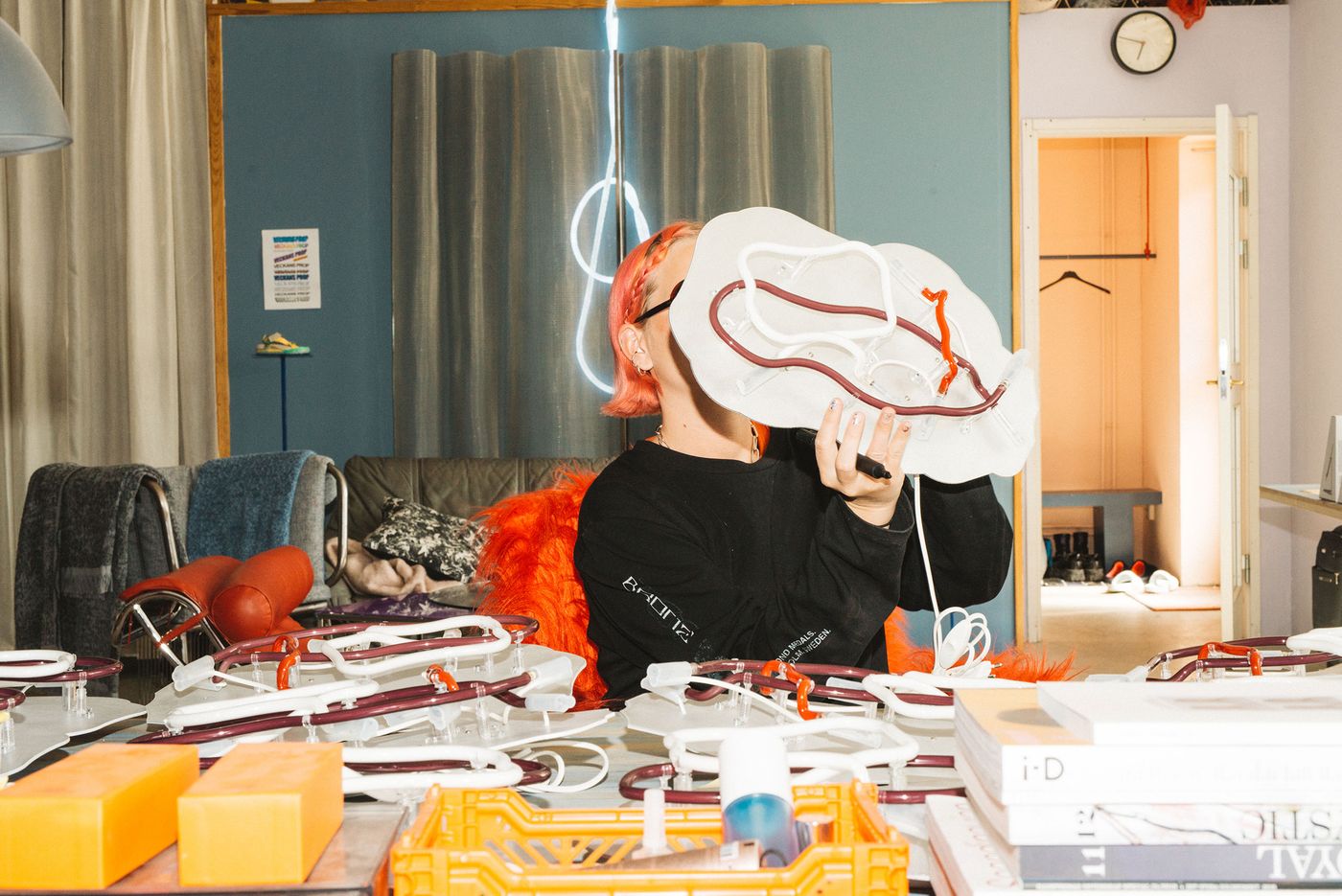
'Globos Neon' by Josefin Eklund for Hem X series curated by Arranging Things.Photography courtesy Hem.
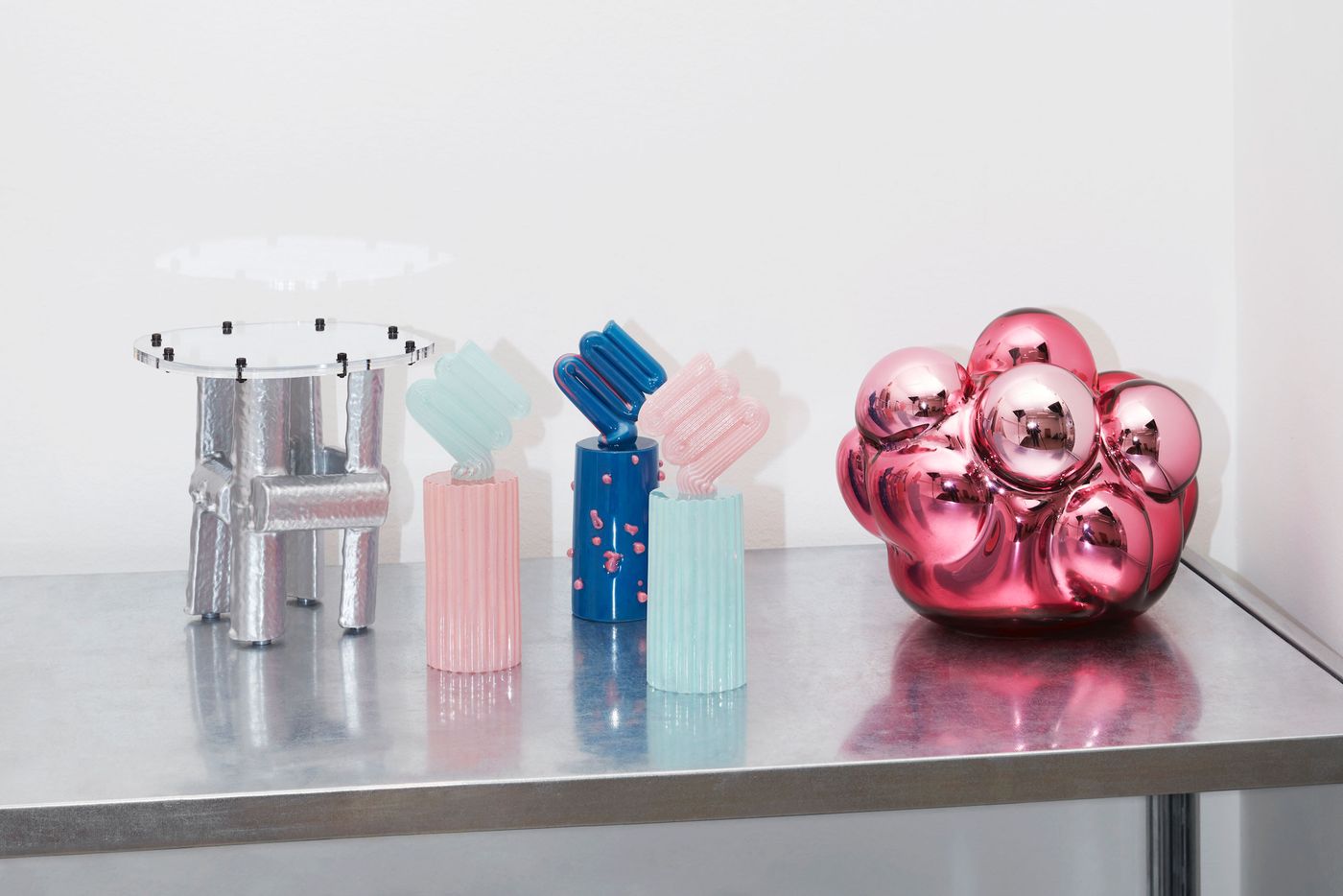
Hem X series curated by Arranging Things. From left: 'Power Plinth' by by Jonatan Nilsson; 'Monument' by Rasmus Nossbring; 'Moln' by Lisa Reiser.Photography courtesy Hem.
At Massproductions’ showroom, we were wowed by “The Little Things”, the brand’s first foray into accessories which includes a series of mirrors in polished stainless steel with curved, reflective sides and a useful hanging knob, a large-scale vase produced with a combination of glassblowing techniques, and a geometric rubber door wedge which took over a year to design in order to be able to accommodate most doors.At Bolon’s headquarters, we were enchanted as much by the new colour palette of the “Artisan” and “Botanical” flooring and rug collections as with the dinner we had the pleasure of attending. Made only with renewable energy and containing recycled materials, the collections reflect the company’s no-nonsense dedication and innovative approach to sustainability.
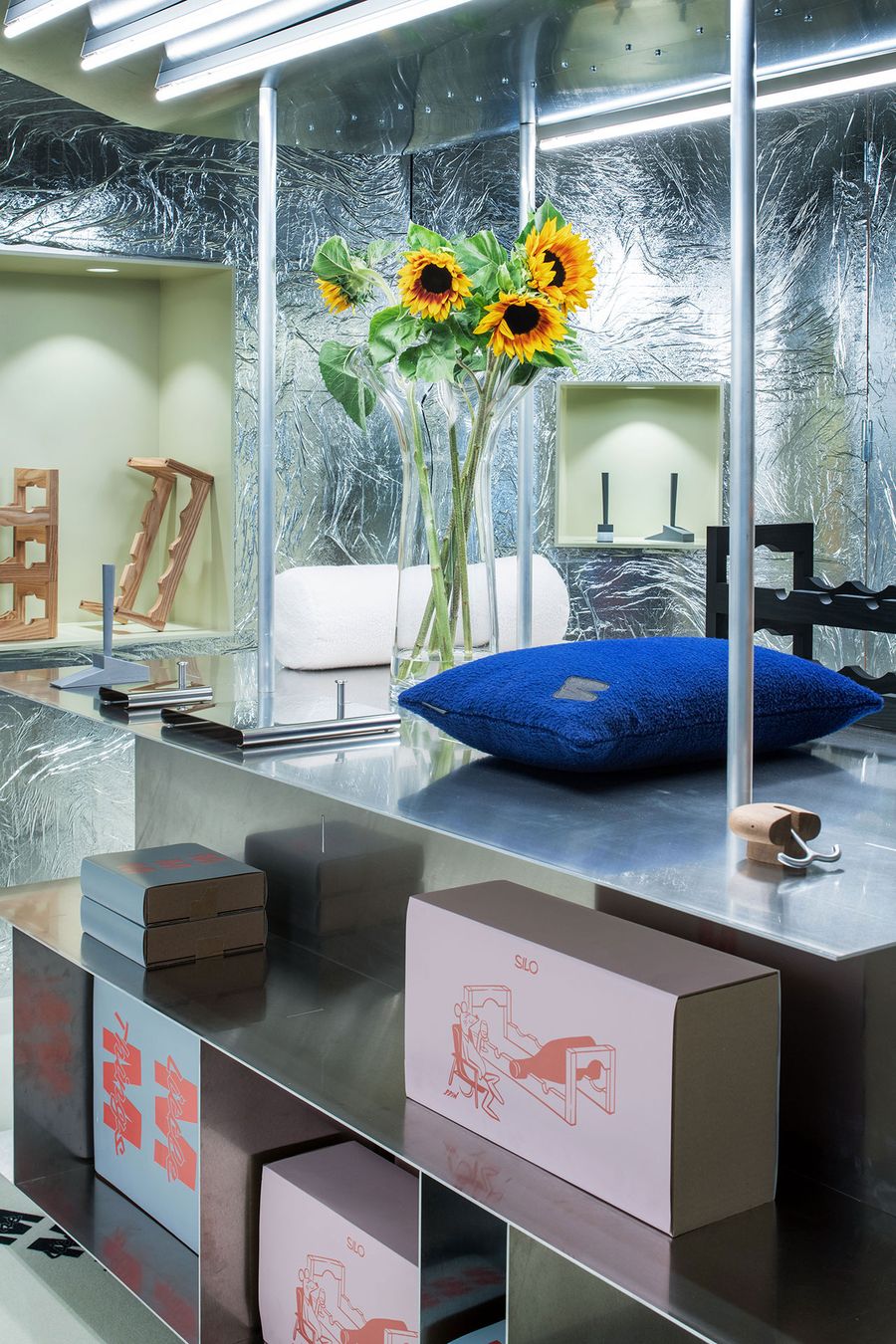
'The Little Things' collection by Massproductions.Photography courtesy of Massproductions.

'Artisan' flooring collection by Bolon. Photography courtesy of Bolon.

'Botanic' flooring collection by Bolon. Photography courtesy of Bolon.

'Botanic' flooring collection by Bolon. Photography courtesy of Bolon.
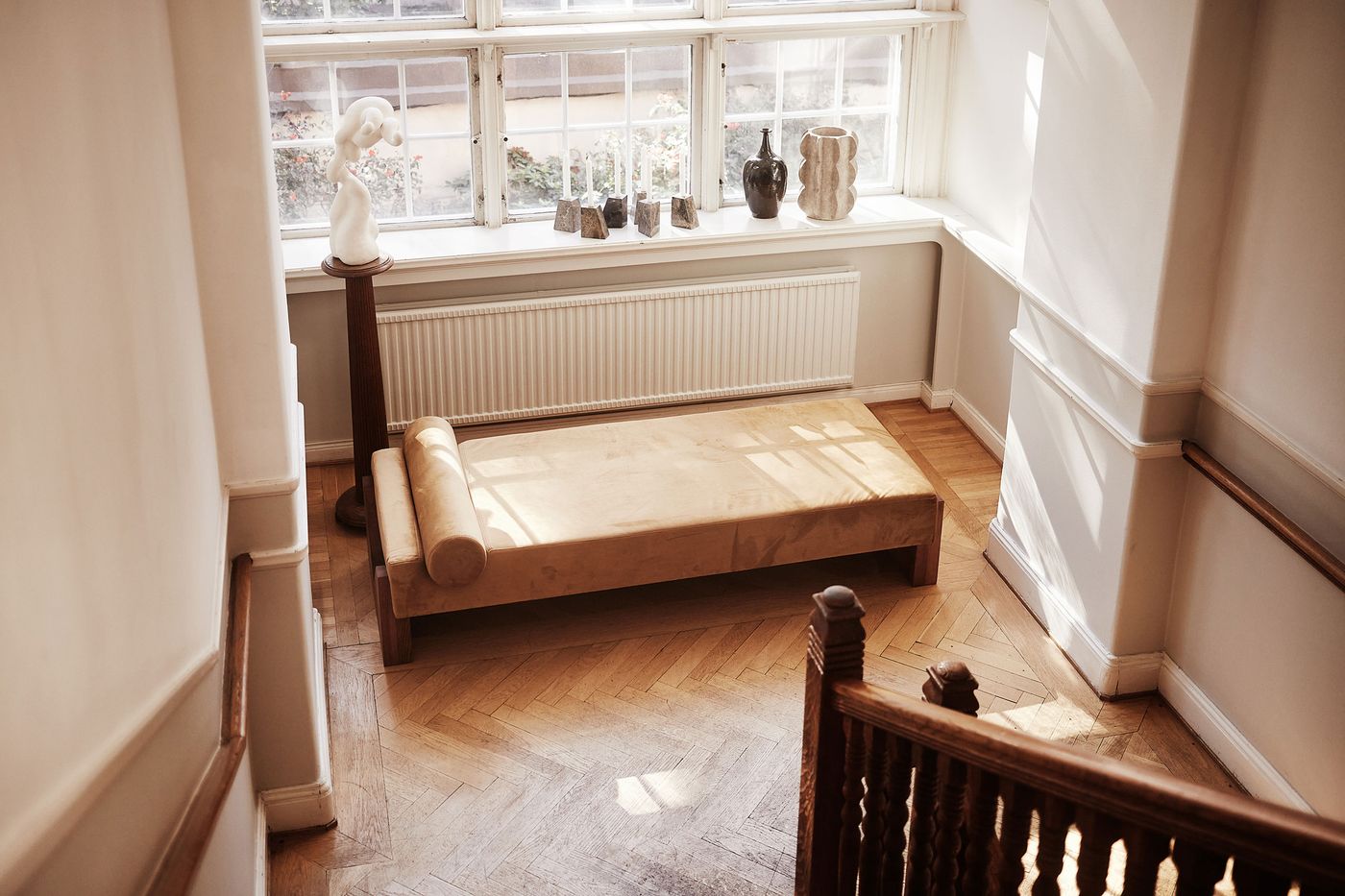
MODIN Communication showroom featuring pieces from the Dusty Deco collection and artworks from Loyal Gallery.Featured: V Day Bed Boucle. Photography by Pierre Björk. Courtesy of Dusty Deco.
Over at Dusty Deco’s temporary showroom at the headquarters of MODIN Communication, we got to see the Swedish brand’s new collection of furniture, rugs and objects including the relaunch of a sofa designed by experimental architect-designer Elias Svedberg in the 1937 and a new chair by Swedish interior designer Atelier Alba. Luxurious in sensibility yet assiduously functional in design, the collection’s affinity to iconic modernist forms attests to Dusty Deco’s origins as an eclectic vintage store.
The Dusty Deco collection’s vintage vibes proved to be a fitting prelude for the “Made in Sweden” exhibition at Bukowskis, Scandinavia’s leading auction house, which showcased an assorted selection of objects that symbolize Sweden's extended tradition within design, art, sports, fashion and music. The objects, which were auctioned on September 9, included Josef Frank’s model 881 “Nationalmuseum’s cabinet” which was acquired by the museum in connection with an exhibition in 1952, a set of two easy chairs by IKEA made in the 1950s, the "Ericofon" (also known as the Kobra telephone), the ground-breaking "all in one” phone that Swedish company Ericsson introduced in 1956, two drum sets from ABBA’s European and Australian tours in 1976-77, and our favourite, a set of five "Lovö" chairs designed for NK in the 1930s by Axel Einar Hjorth, one of Sweden's most significant furniture designers during the Swedish Grace era.
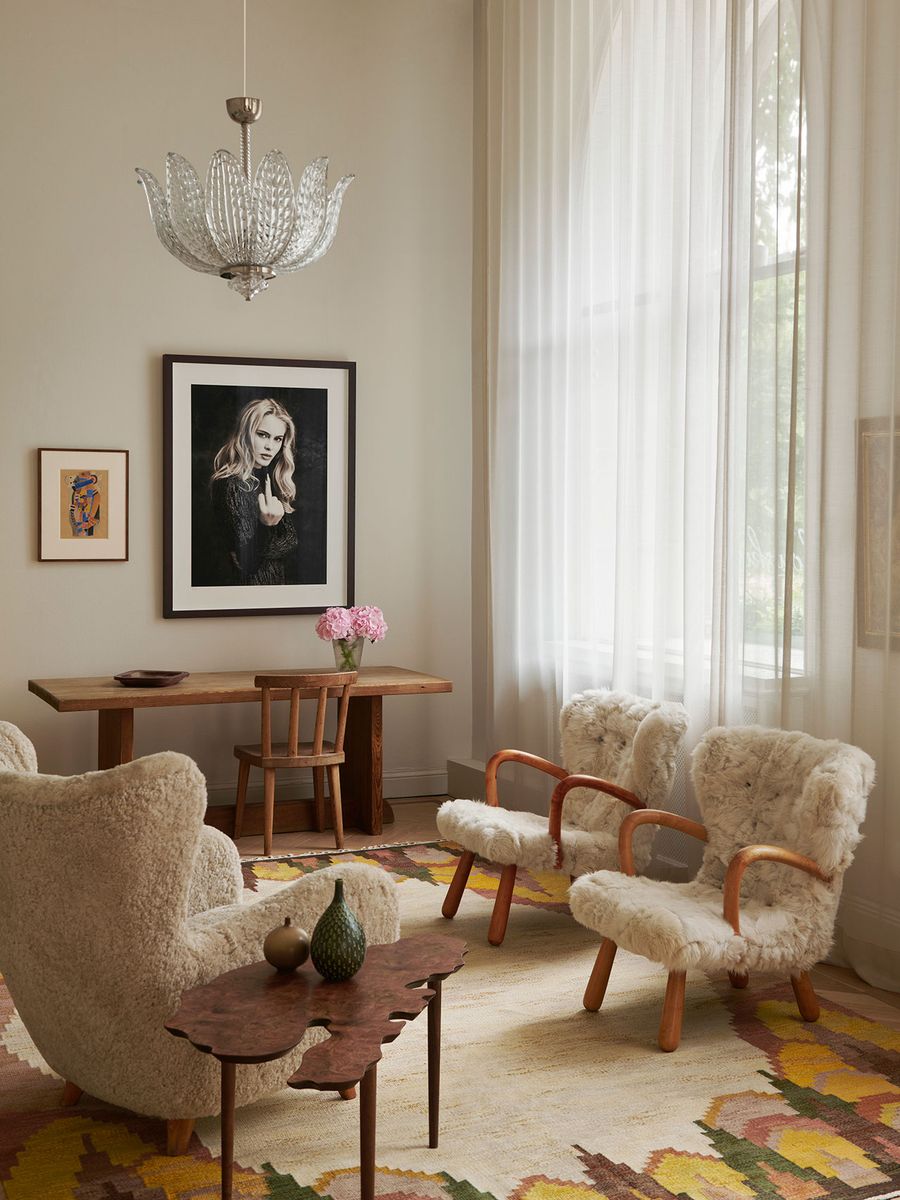
'Made in Sweden' exhibition by Bukowskis.Featured: Easy chair by Olle Sjögren (left); Side table by Michael Anastassiades for Svenskt Tenn; 'Åke' easy chairs by IKEA (left); Pine furniture by Axel Einar Hjorth (in the back); Pendant light Fritz Kurz; Carpet by Judith Johansson; Art by Gösta Adrian-Nilsson and Albert Wiking.Photography courtesy of Bukowskis.

'Font' sofa system by Matti Klenell for Offecct. Photography by Bjorn Ceder.
Additional furniture that made an impression included “Font”, a sofa system that Matti Klenell originally developed for Stockholm's Nationalmuseum which he has now expanded for Offecct; “RUT”, a square sofa system by Blå Station whose sober elegance belies soft, comfortable seating modules; a minimal daybed designed by Teresa Lundmark and Gustav Winsth for Gärsnäs that combines a beautifully crafted beech frame with rounded wool pillows; and “Gemla Open”, a light and comfortable armchair designed by Samuel Wilkinson in 2022 for Gemla made entirely of solid ash that has been carefully steamed and bent by hand into its graceful shapes.
Industrial in ambience and minimalist in aesthetic, Malmo-based lighting brand Wästberg’s exhibition presented the new “w221 Medium” pendant which was designed in collaboration with architecture practice Claesson Koivisto Rune. Featuring a starkly reduced, triangular silhouette, the new pendant was showcased among its larger and smaller siblings in a meticulously arranged array of black and white conical pendants.

'Font' sofa system by Matti Klenell for Offecct. Photography by Bjorn Ceder.
Additional furniture that made an impression included “Font”, a sofa system that Matti Klenell originally developed for Stockholm's Nationalmuseum which he has now expanded for Offecct; “RUT”, a square sofa system by Blå Station whose sober elegance belies soft, comfortable seating modules; a minimal daybed designed by Teresa Lundmark and Gustav Winsth for Gärsnäs that combines a beautifully crafted beech frame with rounded wool pillows; and “Gemla Open”, a light and comfortable armchair designed by Samuel Wilkinson in 2022 for Gemla made entirely of solid ash that has been carefully steamed and bent by hand into its graceful shapes.

'Gemla Open' chair by Samuel Wilkinson for Gemla. Photography courtesy Gemla.

'Dag' daybed by Teresa Lundmark and Gustav Winsth for Gärsnäs. Photography by Pia Ullin. Courtesy of Gärsnäs.
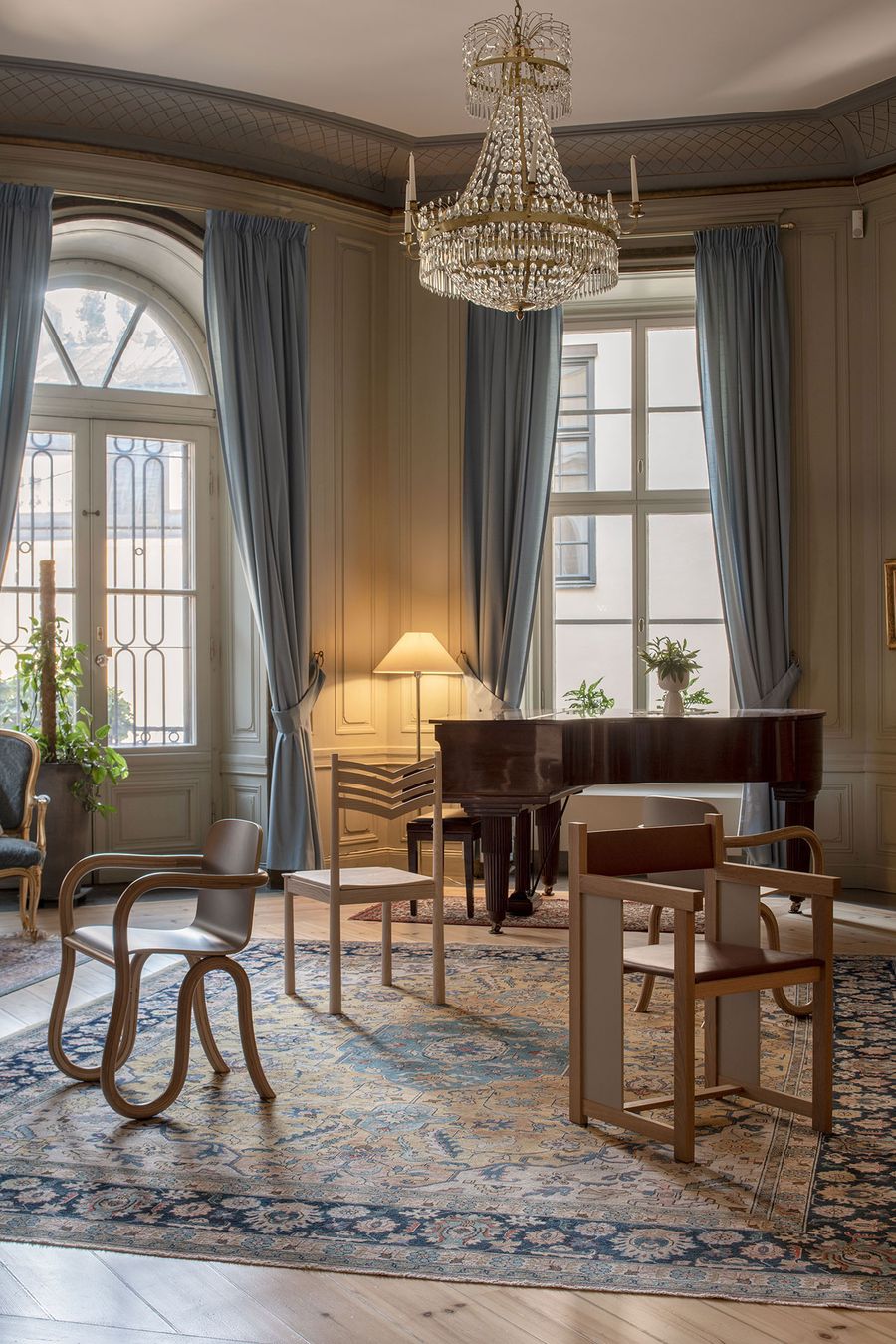
Made by Choice exhibition at Stockholm's Embassy of Finland. Photography by Andy Liffner. Courtesy of Made by Choice.
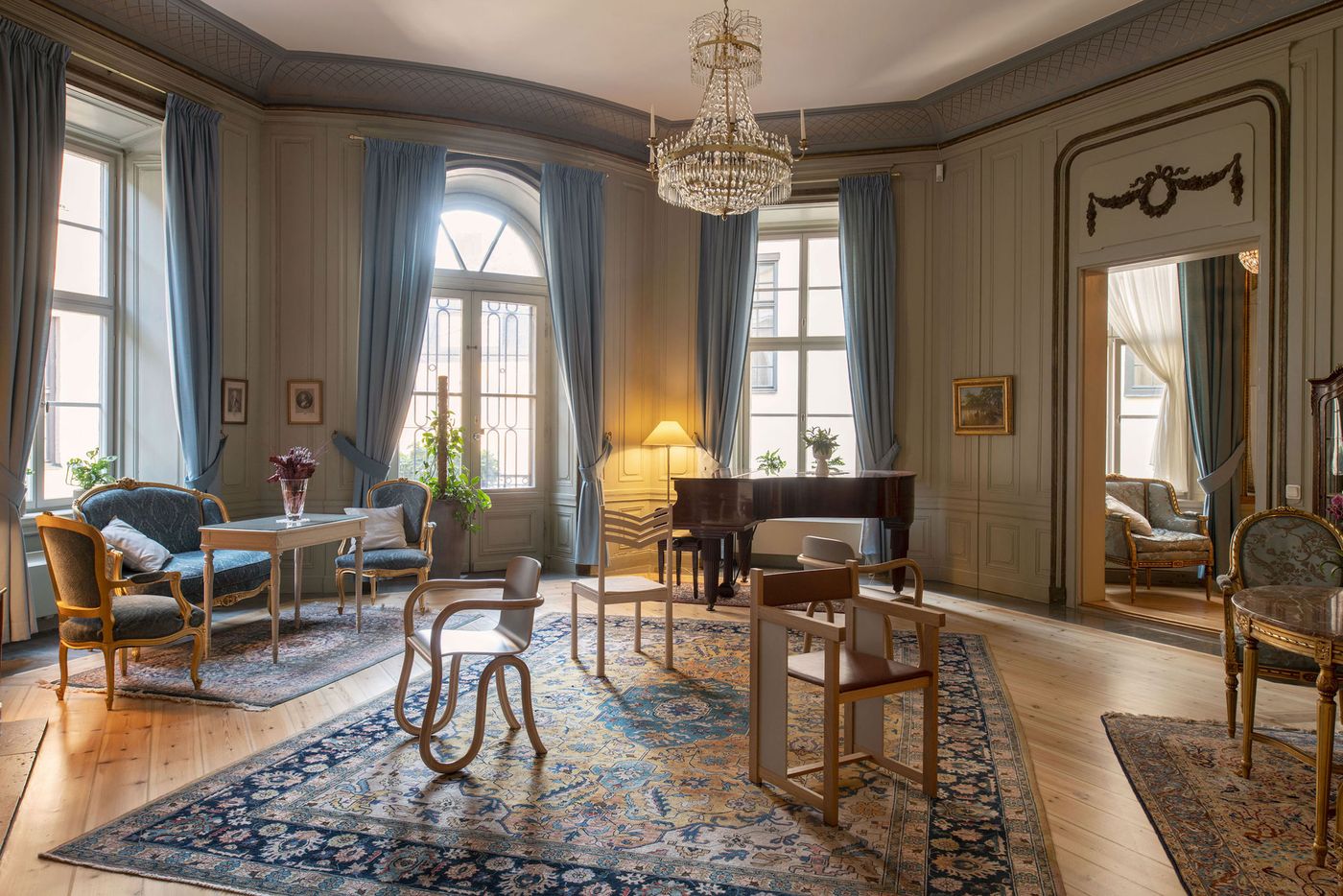
Made by Choice exhibition at Stockholm's Embassy of Finland. Photography by Andy Liffner. Courtesy of Made by Choice.

Wästberg exhibition.Photography by Andy Liffner. Courtesy of Wästberg.
Industrial in ambience and minimalist in aesthetic, Malmo-based lighting brand Wästberg’s exhibition presented the new “w221 Medium” pendant which was designed in collaboration with architecture practice Claesson Koivisto Rune. Featuring a starkly reduced, triangular silhouette, the new pendant was showcased among its larger and smaller siblings in a meticulously arranged array of black and white conical pendants.
Swathed in monochrome grey tones, the new studio space of industrial design practice From Us With Love (FUWL) offered a serene respite from the kaleidoscopic frenzy of SDW’s mix of events. Designed in collaboration with architecture studio Förstberg Ling and the branding studio Figur, the studio is a flexible space that can easily adapt to suit the shifting modes entailed in creative work. Four large sliding doors that span the studio’s length can divide the open-plan space into multiple configurations, while a series of modular units can be used for everything from a storage wall, to desks and project tables. Inspired by pegboard walls, the units are made from perforated steel and at the time of our visit served as a material library, tools wall and personal storage, as well as wheeled cabinets displaying a selection of FUWL’s ongoing projects, from dealing with waste materials, to designing systems for the workplace, to reinventing consumer packaging.
Finally, whilst dining at the home of designer Alexander Lervik and his wife Elin Lervik, PR Manager at Svenskt Tenn, we were blown away by the residence’s unique elevator designed by Alexander for platform lift-makers Aritco. Sublimely illuminated, with a futuristic smart control panel inspired by modern cars and audio equipment, the lift was conceived as a design object rather than a piece of equipment. Stepping inside, it almost feels like you’re about to be teleported to design heaven, all in all a spot-on sensation in light of SDW’s week-long, design-packed celebration of Scandinavian creativity. Needless to say, we’re already looking forward for next year’s edition in February 2023 along with Stockholm’s Furniture & Light Fair when, it has just been announced, the Guest of Honour distinction will go for the first time in its history to Swedish studio, Front, whose recent work has a strong connection to the Swedish nature.

Form Us With Love (FUWL) studio.Photography by Jonas Lindström Studio. Courtesy FUWL.
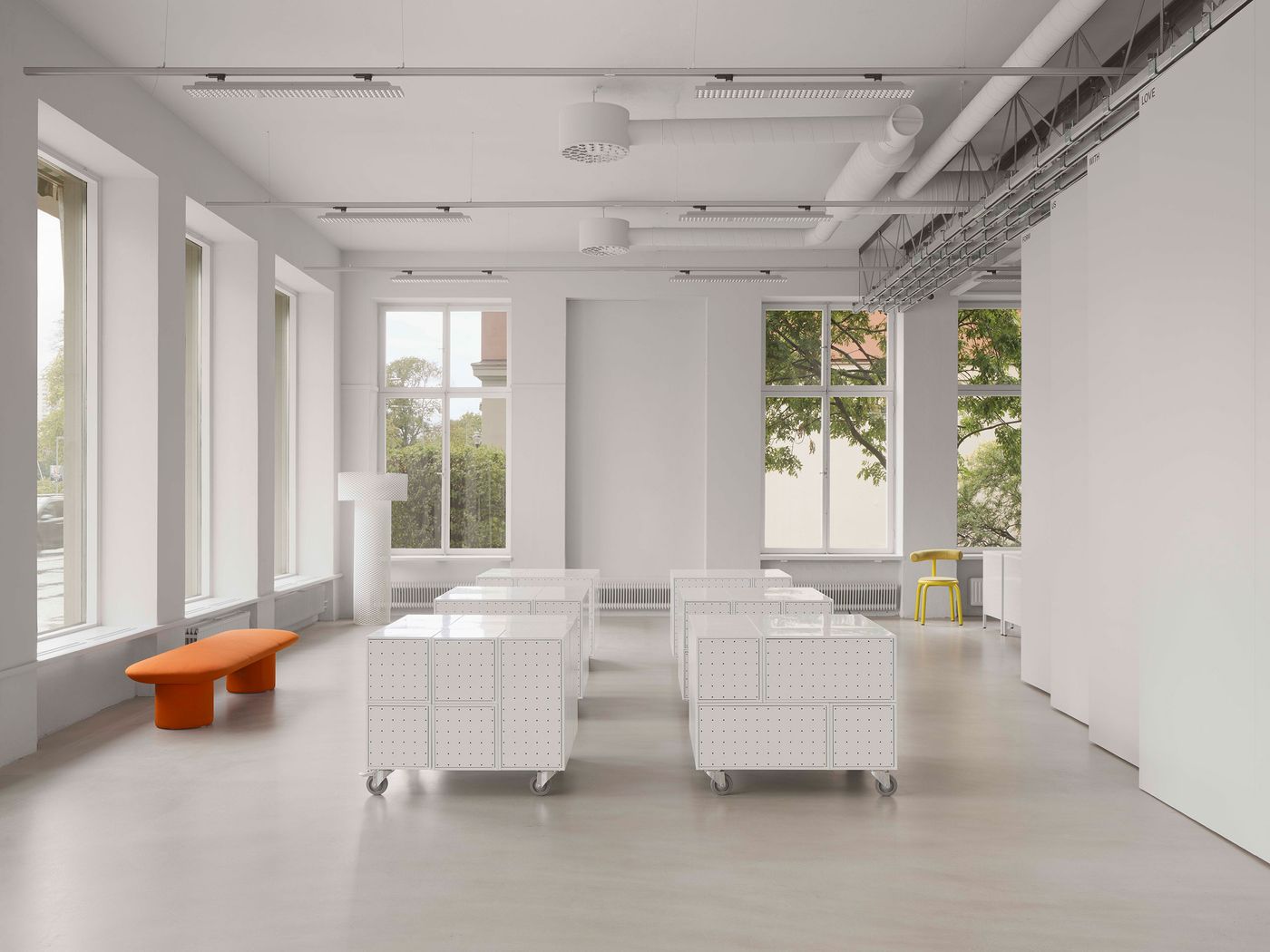
Form Us With Love (FUWL) studio.Photography by Jonas Lindström Studio. Courtesy by FUWL.
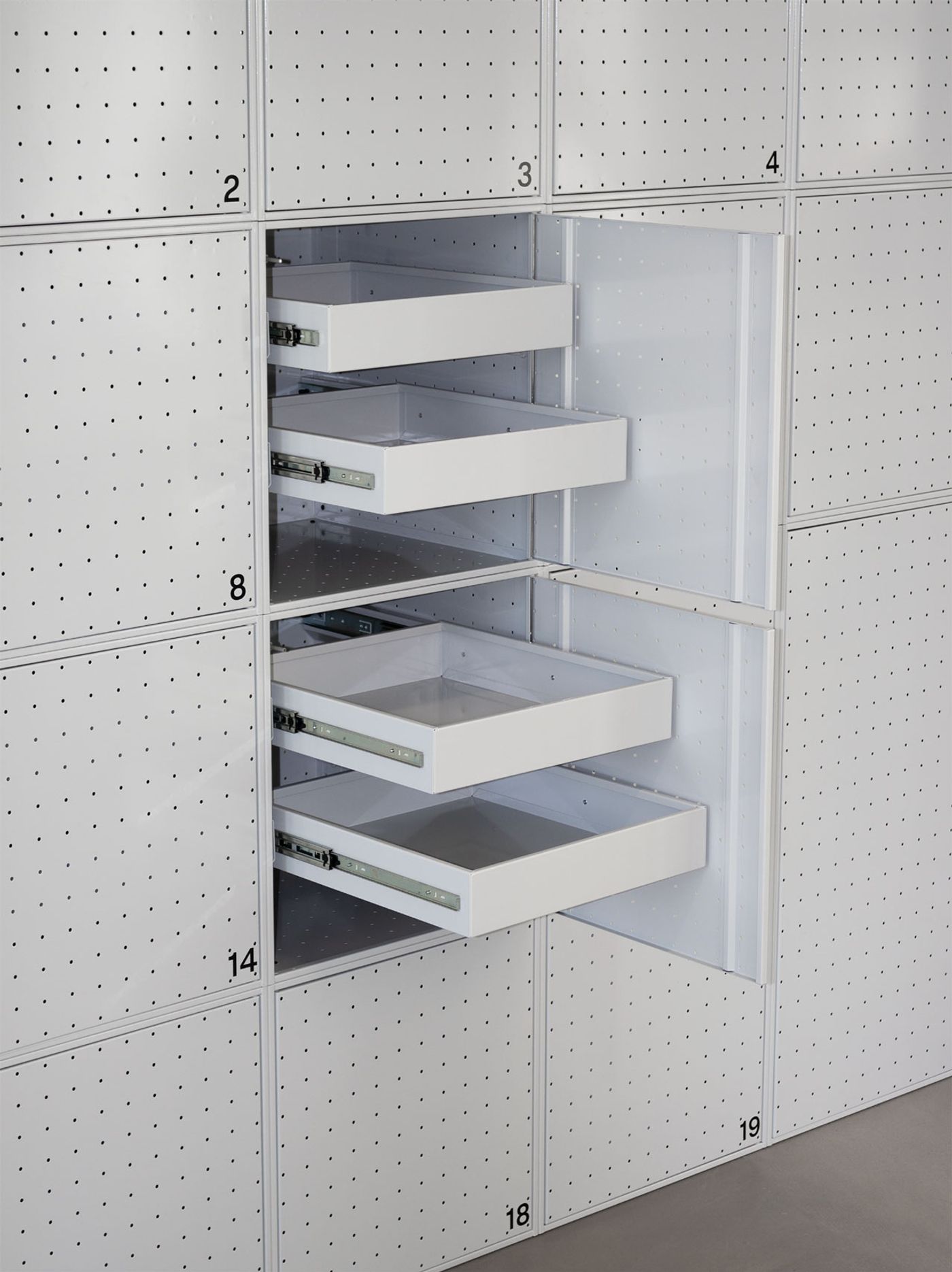
Form Us With Love (FUWL) studio.Photography by Jonas Lindström Studio. Courtesy FUWL.
